I’ve been fortunate to own the Sony FE 100-400mm 4.5-5.6 GM OSS lens (SEL100400GM) since it was launched back in July 2017. Since then I’ve shot a good mix of sport, wildlife and a little aviation with the lens mounted to my Sony a6500, a7R III, and a9 cameras.
Now, I know that MTF charts serve a useful purpose in evaluating lens performance, but I’m afraid you won’t find any in this review, nor will you find any images of my bookcase. So if this is what you are looking for, I’m sorry to disappoint you so early on!

However, if you would like to learn about how this lens performs in the real world, and view a variety of shots from environments that this lens was actually designed to be used in, then please keep scrolling.
Table of Contents[Hide][Show]
- Lens Overview
- Key Specs
- Build Quality
- Handling
- Focus Acquisition Speed and Accuracy
- Lens Sharpness and Contrast
- Bokeh
- Vignetting, Chromatic Aberration, and Flare Control
- Low Light Performance
- An Excellent Macro Lens
- Performance with 1.4x Teleconverter
- Performance with 2x Teleconverter
- Compared To
- Summary
- Before You Go
- More Sample Images
Before we go any further I have one question for you: Are you are reading this review on a small mobile device? If so, please stop right now. It’s very difficult to review images on such a tiny screen, so if you are seriously considering purchasing this lens, I’d recommend that you continue reading on something a little larger.
Lens Overview
The introduction of the Sony FE 100-400mm f/4.5-5.6 GM OSS lens finally filled a substantial gap in Sony’s E-mount lens line up, and has provided Sony sports and wildlife photographers a serious piece of glass to freeze action and capture spectacular moments from afar.
The lens has a focal range of 100-400mm on full frame cameras like the Sony a7 series and a9, but mount this lens to your APS-C camera like the a6000/a6300/a6500 and you’ll now have a 35mm equivalent focal range of 150-600mm, which is quite the reach!
The lens is also compatible with the Sony FE 1.4x and 2.0x teleconverters, helping to extend its reach up to 560mm with the 1.4x and up to 800mm with the 2x. I’ll be talking about just how well these teleconverters perform a little later on in this review.

a6500 @ 345mm | 1/250 | f/5.6 | ISO 400
The lens is comprised of 22 elements in 16 groups, with two extra-low dispersion (ED) glass elements and one super-ED element that help to keep chromatic aberrations to a minimum. A nano AR coating suppresses internal reflections to minimise flare and ghosting, while a fluorine coating on the front element repels grease, water and fingerprints.
As well as the lens itself, inside the box you will also find a padded zipped bag and strap, as well as the large ALC-SH151 lens hood.
This is by no means a cheap lens, and you will need to find around $2500 or £2500 if you would like to mount this piece of glass to your camera. The Sony badge certainly carries a premium compared with the Canon 100-400mm, which is closer to the $2000/£2000 mark.
Key Specs
- Optical SteadyShot Image Stabilization
- Linear motor and Direct Drive SSM (DDSSM)
- Sony Nano AR coating to eliminate flare and ghosting
- Circular 9-blade aperture for beautiful defocus effects
- Dust and moisture resistant design
- Minimum focus distance: 3.22 ft/0.98 m
- Maximum magnification: 0.35x
- Filter diameter: 77mm
- Weight: 1395 g (without tripod mount) or 1476g (with tripod mount)
- Length: 205mm (smallest) 285mm (maximum)
- Height: 93.9mm
You can find the full lens specifications on Sony’s website.
Build Quality
Unpacking this lens soon reveals why this lens carries the price tag that it does. I can’t personally compare it to the build quality of the Canon or Nikon equivalents since I’ve never used them, but I can compare it to both the Sony FE 70-200mm F4 G and the FE 70-300mm F3.5-5.6 G lenses and will say that it is definitely a step up in build quality, as it should be since it carries the G ‘Master’ badge.

Sony has made use of magnesium allow components for high durability and to keep the weight down, a Nano AR coating to help reduce flare and ghosting, and also added seals to help keep dust and moisture out. I’ve used this lens in both light and heavy showers, and so far have suffered no water ingress into either the lens itself or the camera I was using at the time.
You can see the rubber seal around the lens mount in the below image. You’ll also notice that the rear lens element is recessed into the lens body, this allows either the 1.4x or 2.0x teleconverters to be attached. Currently they are only supported on the 100-400 GM and 70-200 GM lenses, and they will not physical fit any other E-mount lens.

The lens is fairly compact and lightweight. It’s about 1cm longer than Sony’s A-mount equivalent, the 70-400mm f/4-5.6 G SSM II, and over 100g lighter. It’s also 159g lighter than the Canon EF 100-400mm f4.5-5.6 L IS II USM lens with the tripod mount attached.
At the front of the lens you will find a 77mm filter thread, as well as the mount for attaching the large bayonet style lens hood (ALC-SH151). The hood is made from thick plastic and features black matting on the inside to help prevent reflections. The hood attaches firmly to the lens with a simple twist to lock action, and is removed again with a press of a release button and a twist, there is no chance that this hood will be detaching itself!
The ALC-SH151 hood also features a small hatch to allow you to rotate a circular polariser without detaching the hood, although as yet I’ve not attached a polariser to test how well this works.
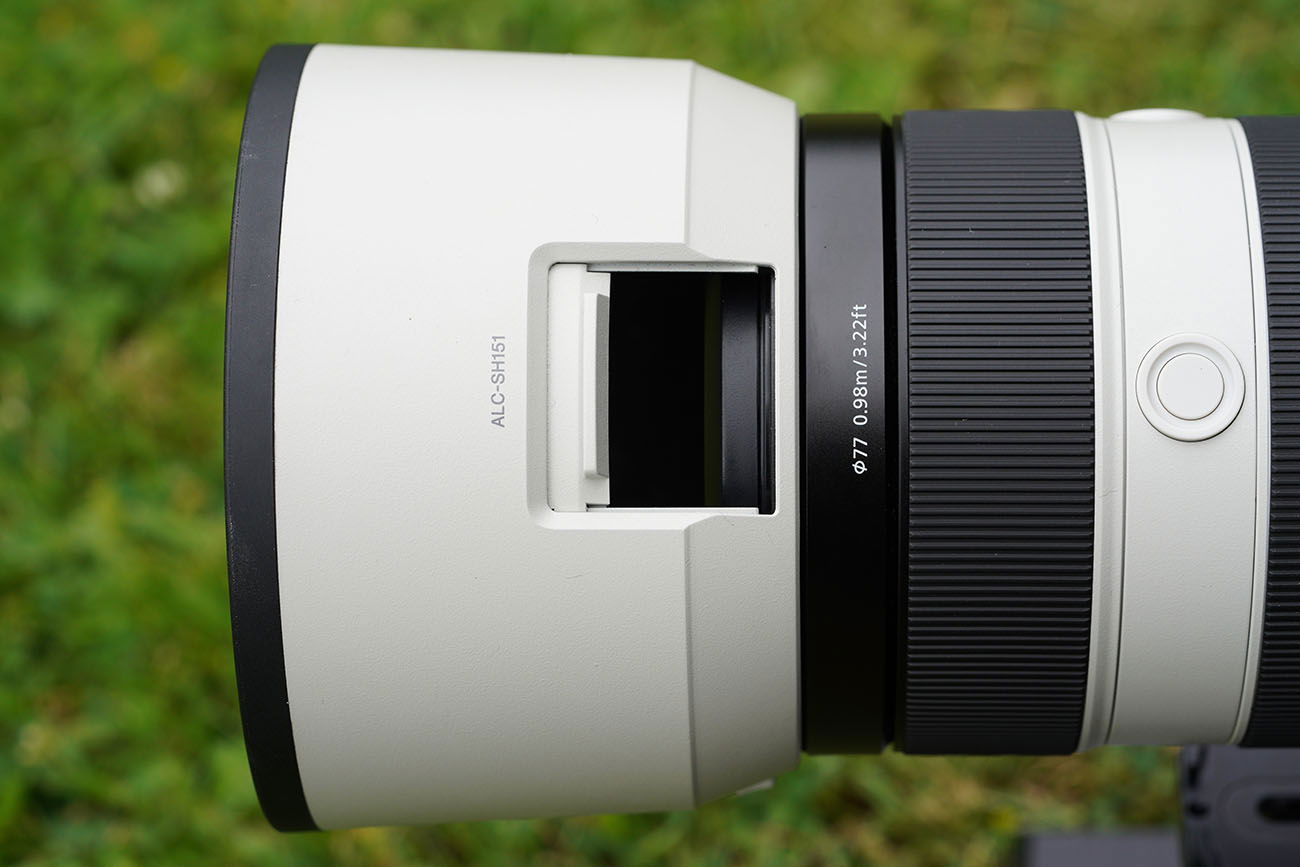
Moving towards the back of the lens barrel you will find the lens collar that holds the tripod mount foot. Loosening the small wheel allows it to rotate smoothly for use in both portrait and landscape positions, or anywhere in-between (I really enjoy playing with different angles, especially when shooting superbikes if I’m using a monopod). You can also detach the foot completely if you wish for convenient transport and storage, removing the foot also exposes a 1/4-20 thread for attachment to other mounts.

Finally there is a 77mm lens cap (ALC-F77S) that features the standard pinch grip. Thankfully unlike many of Sony’s lens caps, this one attaches and detaches firmly the first time.
Handling
The lens feels fairly well balanced when attached to both my Sony a7R III and a9. Needless to say when attached to my much smaller Sony a6500 this balance goes out of the window, but since you will be supporting the lens with one hand anyway, it’s not really a big deal and you soon get used to it. I’ve often spent 8 hours shooting with the a6500 + 100-400 GM and have never once felt that this combination doesn’t work.

a6500 @ 400mm | 1/800 | f/5.6 | ISO 500
Even when the lens barrel is extended it still feels well balanced. Here are a couple of images of the lens with the barrel extended fully at 400mm and also at its most compact size when at 100mm. For those interested, the lens here is mounted to my Jobu Design Jr. 3 Gimbal Head and a Neil Neville Hide Base Plate.

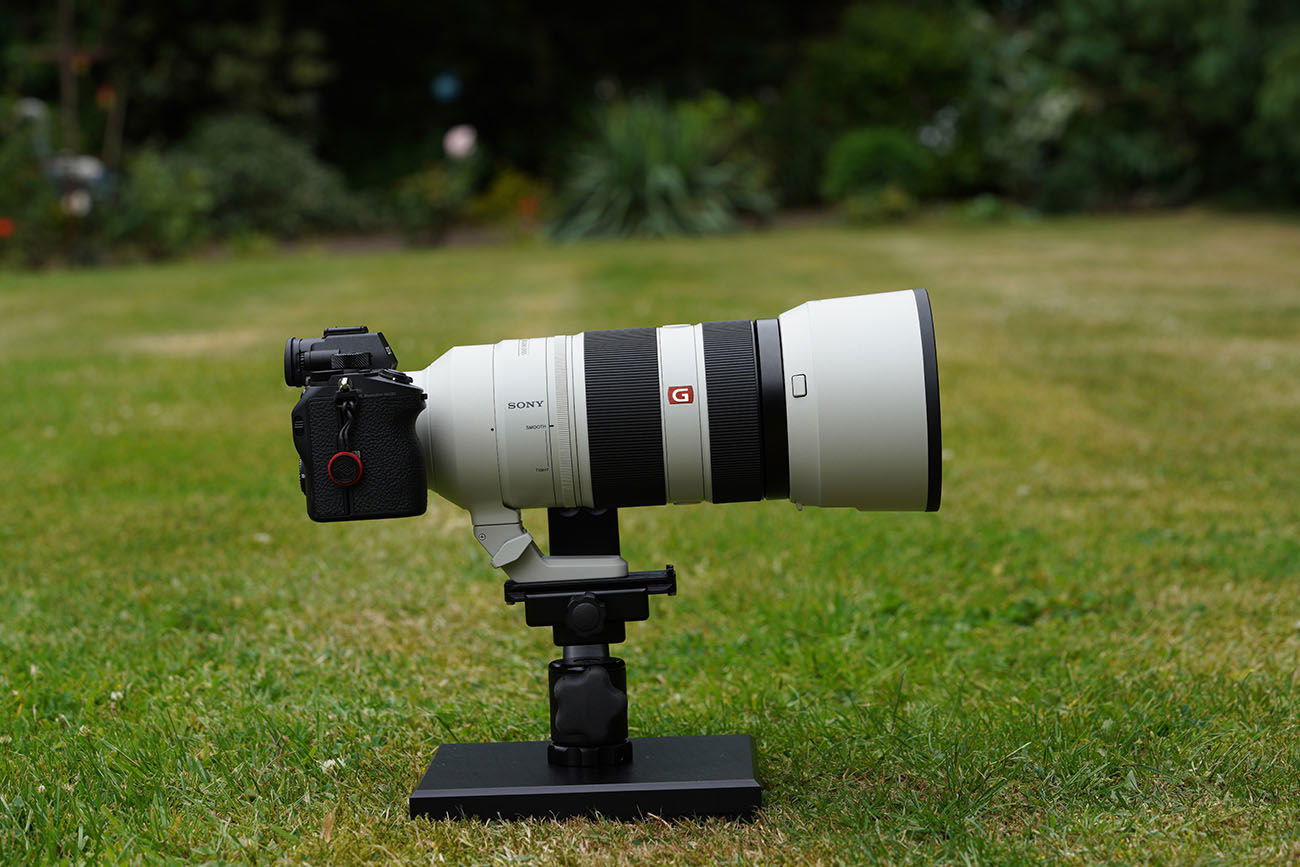
As with most zoom lenses, there are both zoom and manual focus twist-rings on the barrel, as well as a number of buttons and switches. The zoom ring rotates 90 degrees between the lens’ shortest position of 100mm and its maximum extension at 400mm, making it very easy to zoom fully in and out with a single twist.
This is the first Alpha lens to include a zoom smoothness adjuster that provides mechanical control of zoom ring torque. I usually have this set to smooth most of the time, making it very easy to zoom in and out quickly and smoothly. When it is set to smooth the lens will extend under it’s own weight if you let it hang from a neck strap, change it to tight and there is still a little creep if walking about. There is unfortunately no lock switch, but to be honest I’ve not missed having one.
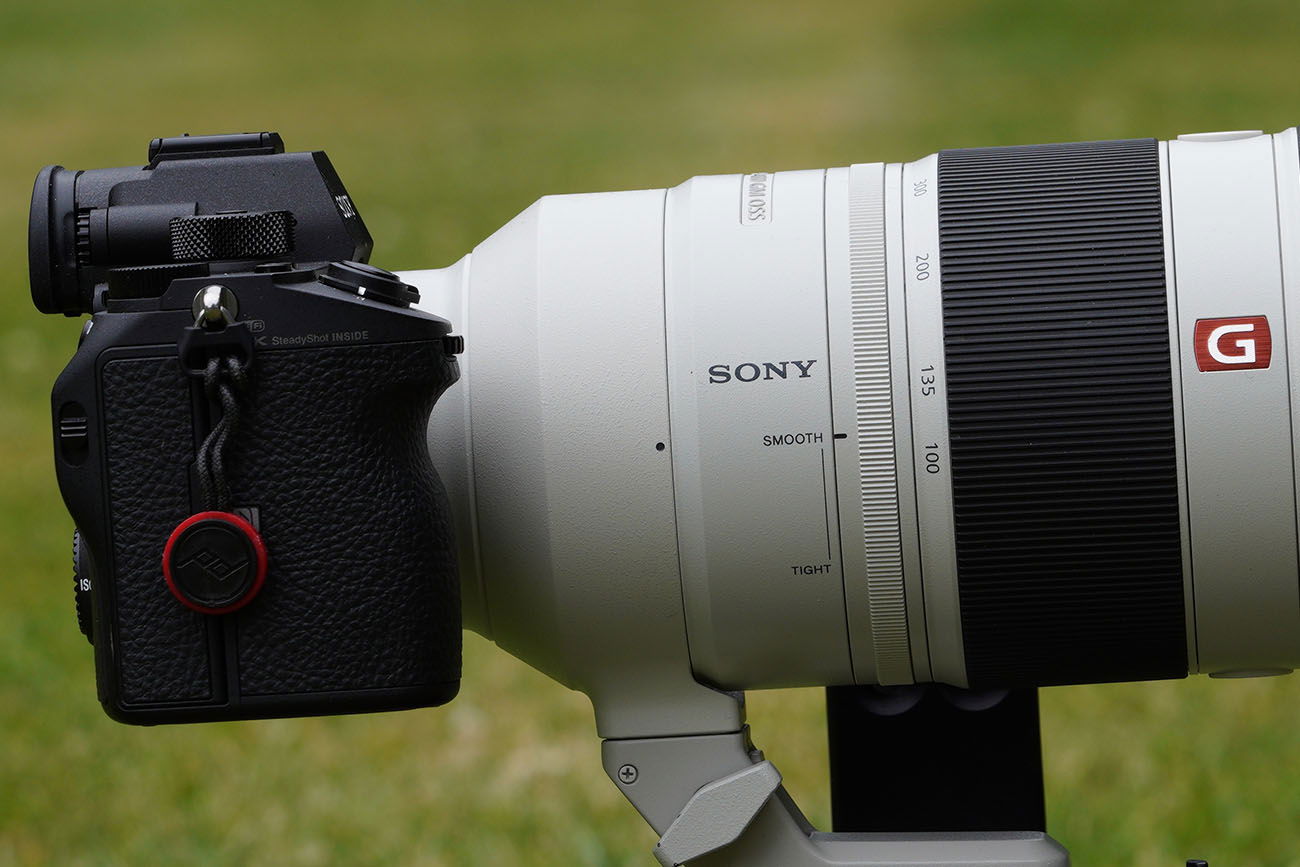
My only wish would be for a torque adjustment option for the focus ring as well, as I find this to be a little too loose for my liking. There is definitely not as much resistance as on the other Sony lenses that I own, and it’s very easy to knock the focus out when shooting in manual focus. I don’t know if this is a fault with my lens, or if this is how it has been designed. I’d ideally like to get my hands on another lens to see how they compare.
You will also find an array of switches on the side of the lens, these include: AF/MF switch, AF distance limiter to reduce focus searching to 3 meters and greater, OSS (Optical Steady Shot) on and off switch which also overrides the build in IBIS of your camera if present, and the panning mode switch. When set to mode 1 you get both vertical and horizontal stabilization, switching to mode 2 just gives you just vertical stabilization so you can pan horizontally and still get lovely sharp images.

There are also 3 ‘focus hold’ programmable buttons located between the focus and zoom ring controls, all of which can be customized in-camera for pretty much any function that you like.
Focus Acquisition Speed and Accuracy
Providing you have good light then you will find the auto-focus to be both incredibly fast, deadly accurate, and virtually silent, which is rather important for shooting fast moving subjects. Of course, auto-focus speed will vary a little depending on which camera you are using, but even when attached to my old a6000 this lens still focuses faster than many of the other Sony zoom lenses that I own (quite a few).
The lens has no difficulty in tracking subjects that are moving towards or away from the camera when you are shooting in continuous focus mode. It certainly had no trouble at all keeping track of this Hawk doing 400+ MPH through the mountainous landscape of North Wales.
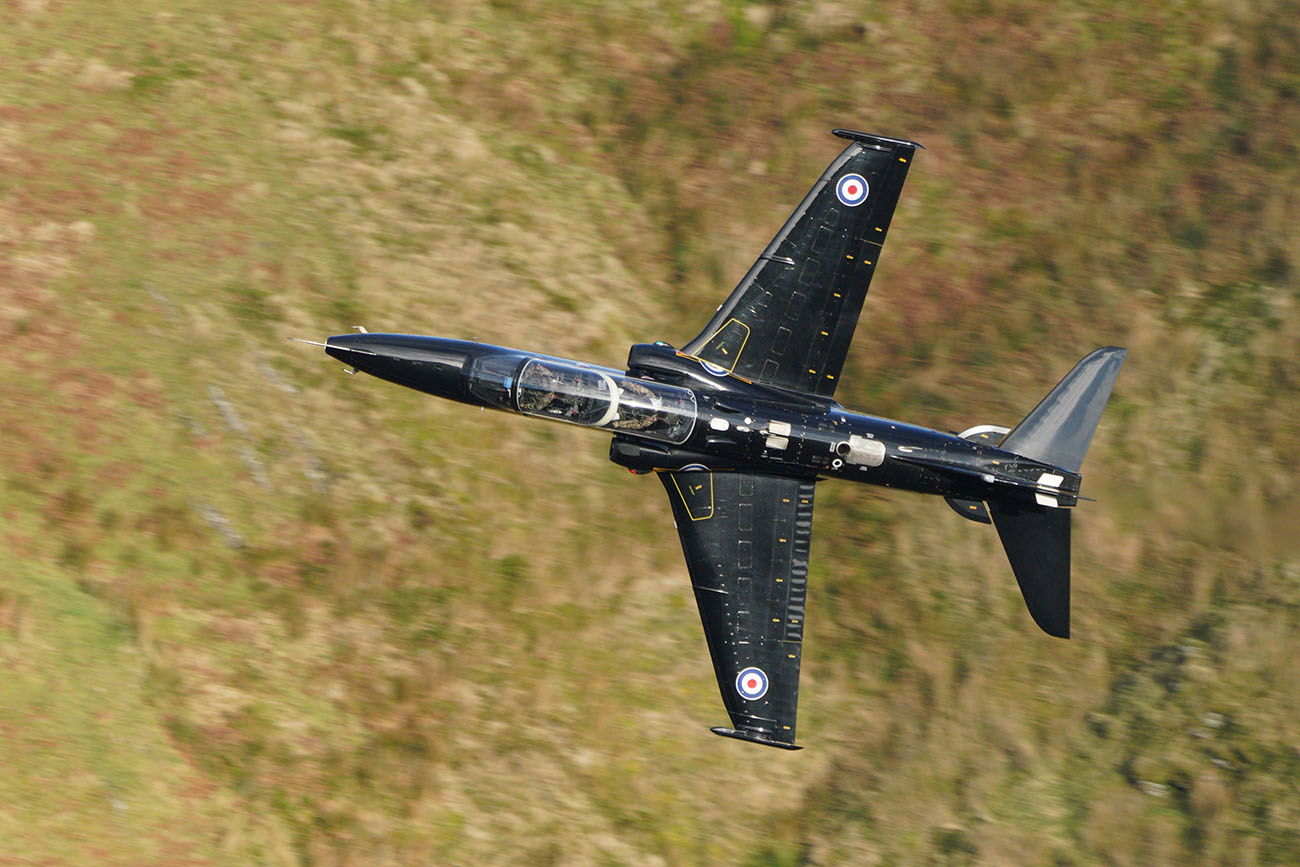
a7R III @ 400mm | 1/1000 | f/5.6 | ISO 500 | Cropped | *Full Resolution Download: JPEG | RAW
Sony has achieved this by using a combination of double linear motor and DDSSM (Direct Drive SSM) drive systems, and it is the first of its kind. It also implements precision sensors that provide real-time feedback for extremely high positioning accuracy, allowing the body’s AF system to perform at its best.

If you enjoy shooting birds in flight like this puffin at Bempton Cliffs on the east coast of Yorkshire, then the poor birds will have no chance! But you will be cursing yourself later when you are spending hours deliberating over which ones to keep.
a9 @ 400mm | 1/1250 | f/5.6 | ISO 320 | Cropped | *Full Resolution Download: JPEG | RAW
Lens Sharpness and Contrast
I’ve not done any specific sharpness or contrast testing, all I can go off is the images I’ve shot and how pleased I am with them. Here’s a shot of a beautiful kingfisher. Make sure you download the jpeg to see the impressive detail that this lens retains.
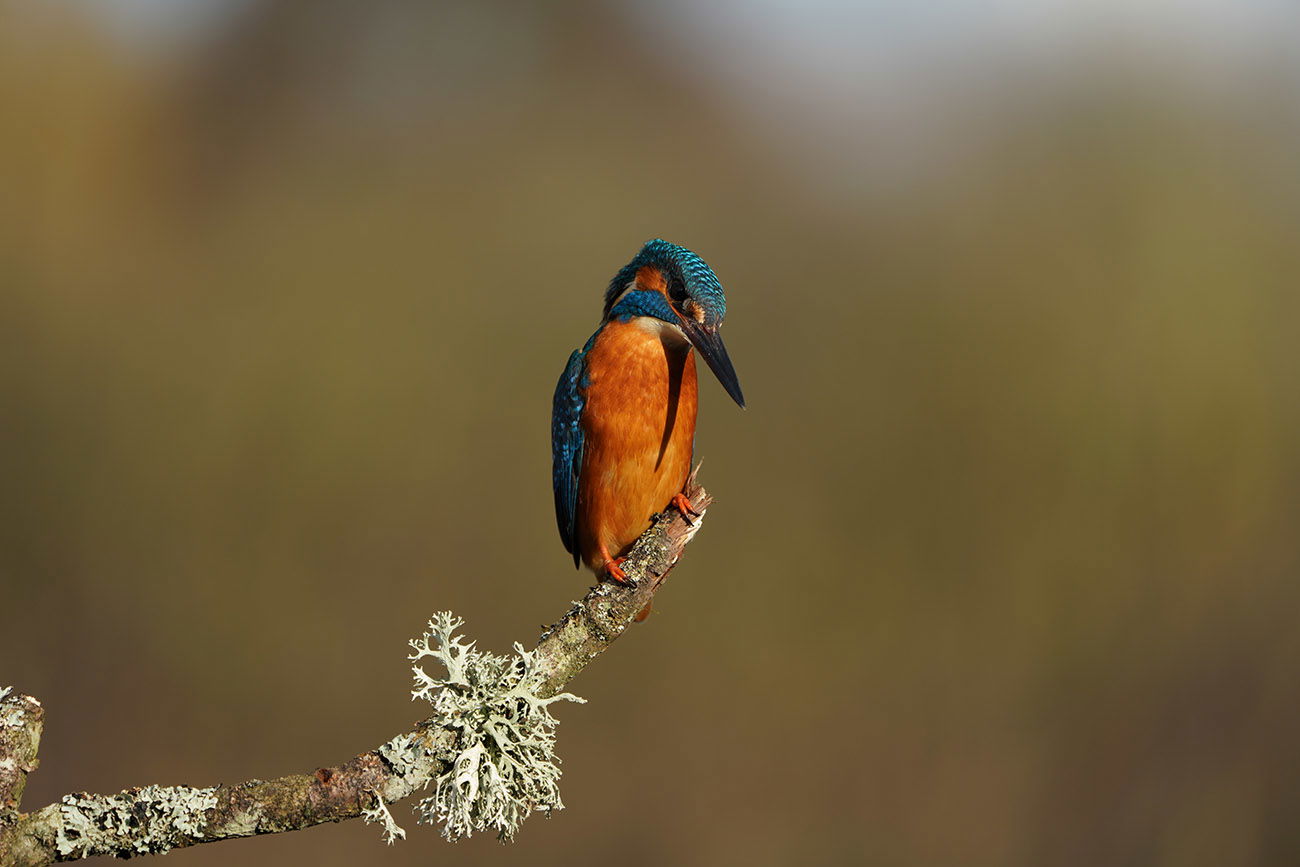
a7R III @ 400mm | 1/400 | f/5.6 | ISO 100 | *Full Resolution Download: JPEG | RAW
If you care for DxOMark tests, then you’ll be happy to know that they rate the sharpness of the Sony 100-400mm GM lens very highly indeed. Here’s what they had to say about the lens compared with Canon’s offering:
Compared to the Canon EF 100-400mm 4.5-5.6L IS II, which has very similar specifications, the Sony FE 100-400mm F4.5-5.6 GM OSS surpasses it in overall performance, even if it doesn’t quite have the excellent uniform performance of the Canon over the focal range. Still, the Sony delivers significantly higher sharpness levels at both ends of the zoom range when wide-open, including the vaunted 400mm focal length and matches it in-between. Stopped down, the Sony is sharper at every focal length. In terms of lens transmission, the Sony is slightly slower at T5.9 versus T5.6; and the Canon has slightly lower levels of distortion and chromatic aberration overall. However, all these things are relative, and the Sony offers better overall image quality at a similar price.
You can read the full DxOMark review here.
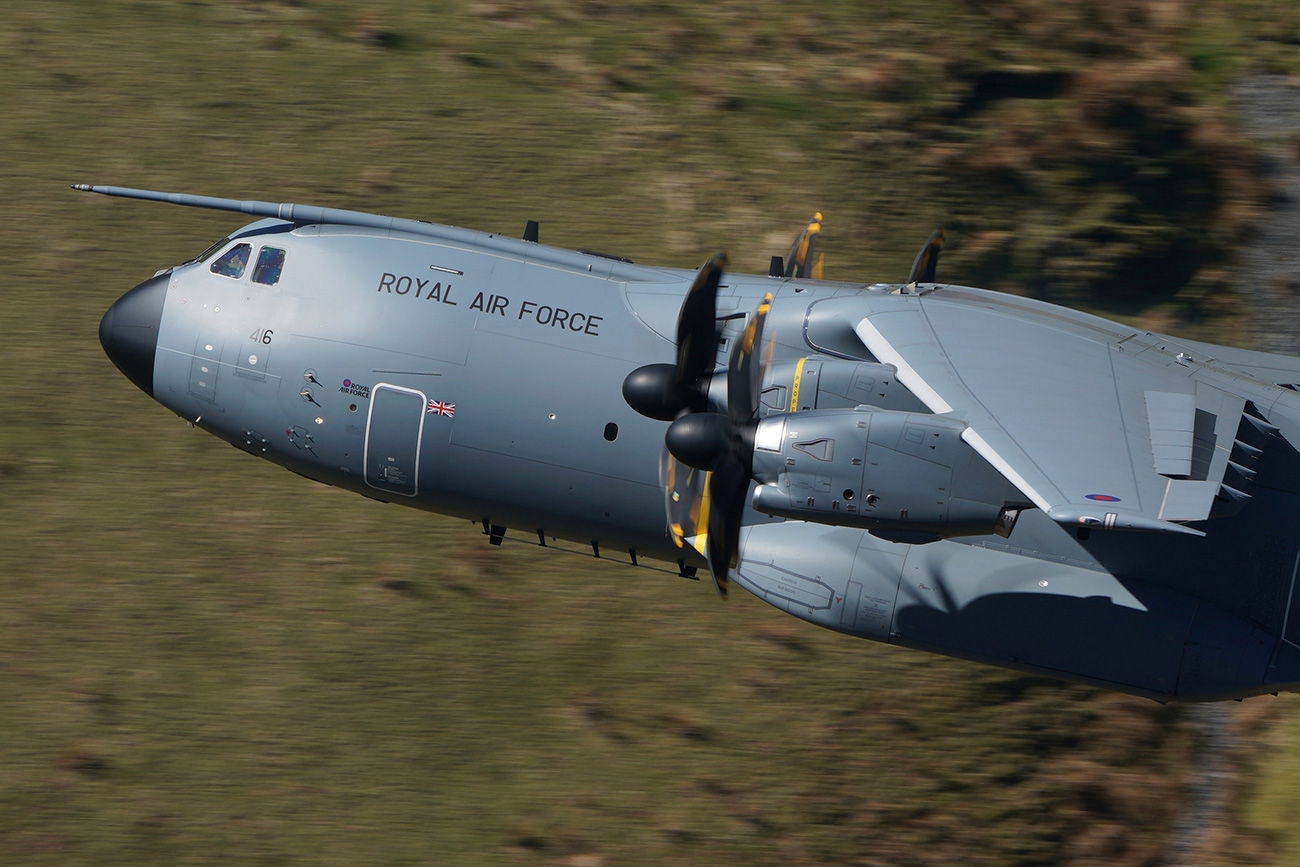
Here’s a shot of an RAF Airbus A400M flying through the Mach Loop in North Wales. Possibly not the best shot to assess the sharpness since I shot it at 1/250sec for some prop blur and was panning, but as you can see, even at this slower shutter speed the image is still nice and sharp.
a9 @ 226mm | 1/250 | f/10 | ISO 100 | Cropped *Full Resolution Download: JPEG | RAW
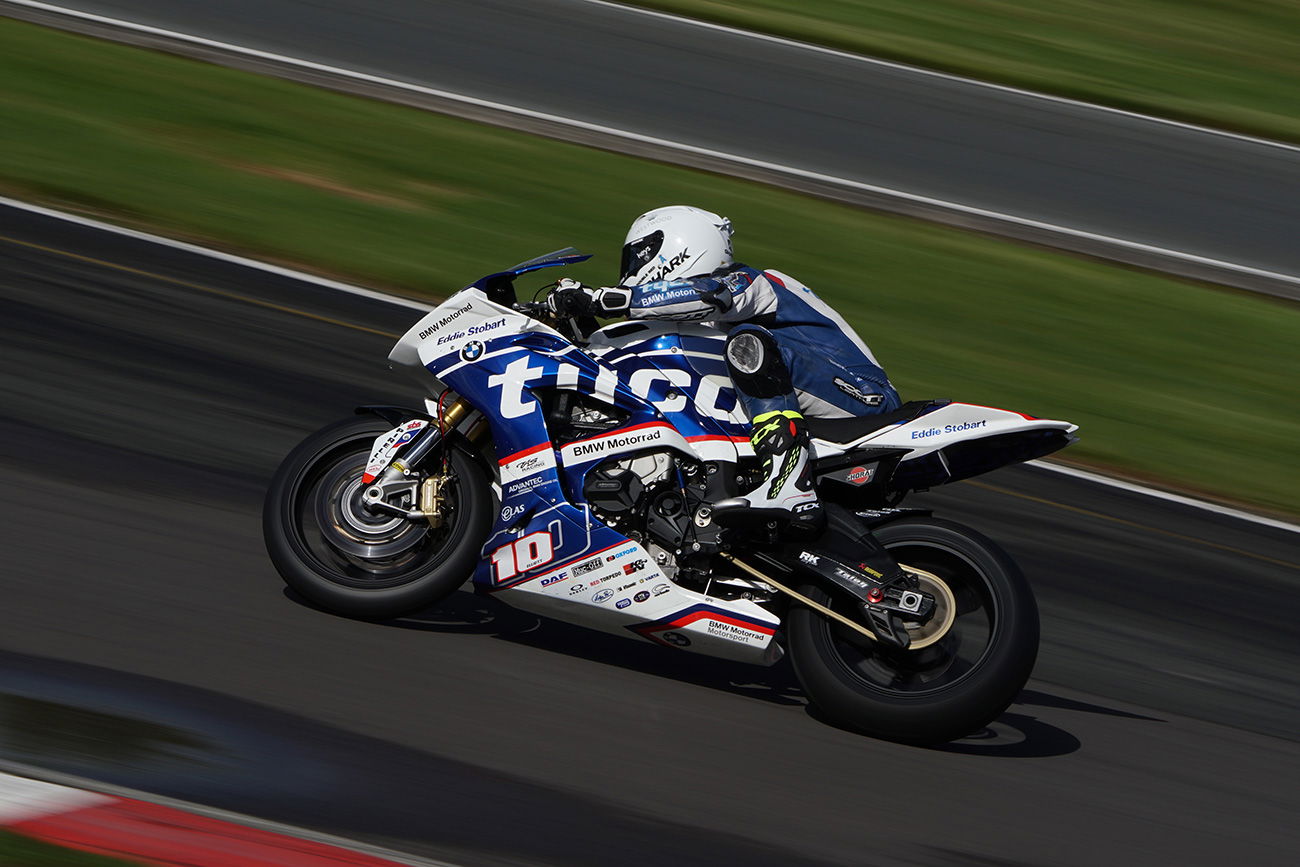
This superbike was also shot at a slower shutter speed to ensure I kept some movement in the wheels. Even when pushing the aperture to f/18 (it was a sunny day), and the a6500 having to make use of contrast detection at this aperture, the lens tracked and nailed the shot I was looking for.
a6500 @ 241mm | 1/200 | f/18 | ISO 100
Bokeh
Bokeh is certainly very subjective, and with a maximum aperture of f/4.5 at 100mm and f/5.6 coming in already at around 164mm, you won’t get the same beautiful bokeh that the 70-200mm F2.8 GM produces. However, the bokeh to my eyes at least is still very pleasing and works well to separate your subject from the background. Here are some examples so that you can decide for yourself.
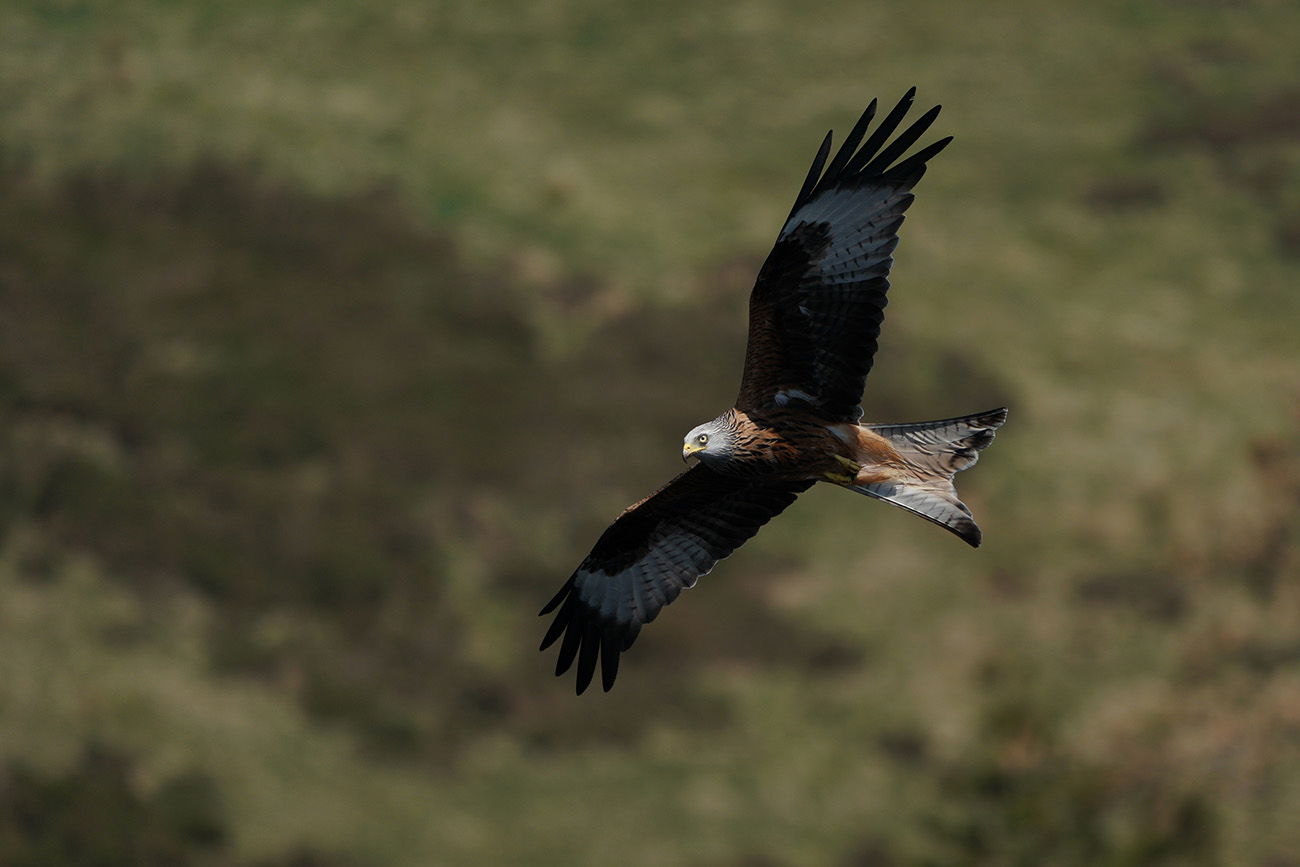
At the Bwlch Nant Yr Arian feeding station in Wales hundreds of kites turn up for feeding time, presenting you with ample opportunities to get some great shots. I highly recommend a visit if you are ever in the area. As you can see, the background is nicely blurred helping the kite to standout.
a9 @ 400mm | 1/1600 | f/5.6 | ISO 200 | Cropped | *Full Resolution Download: JPEG | RAW
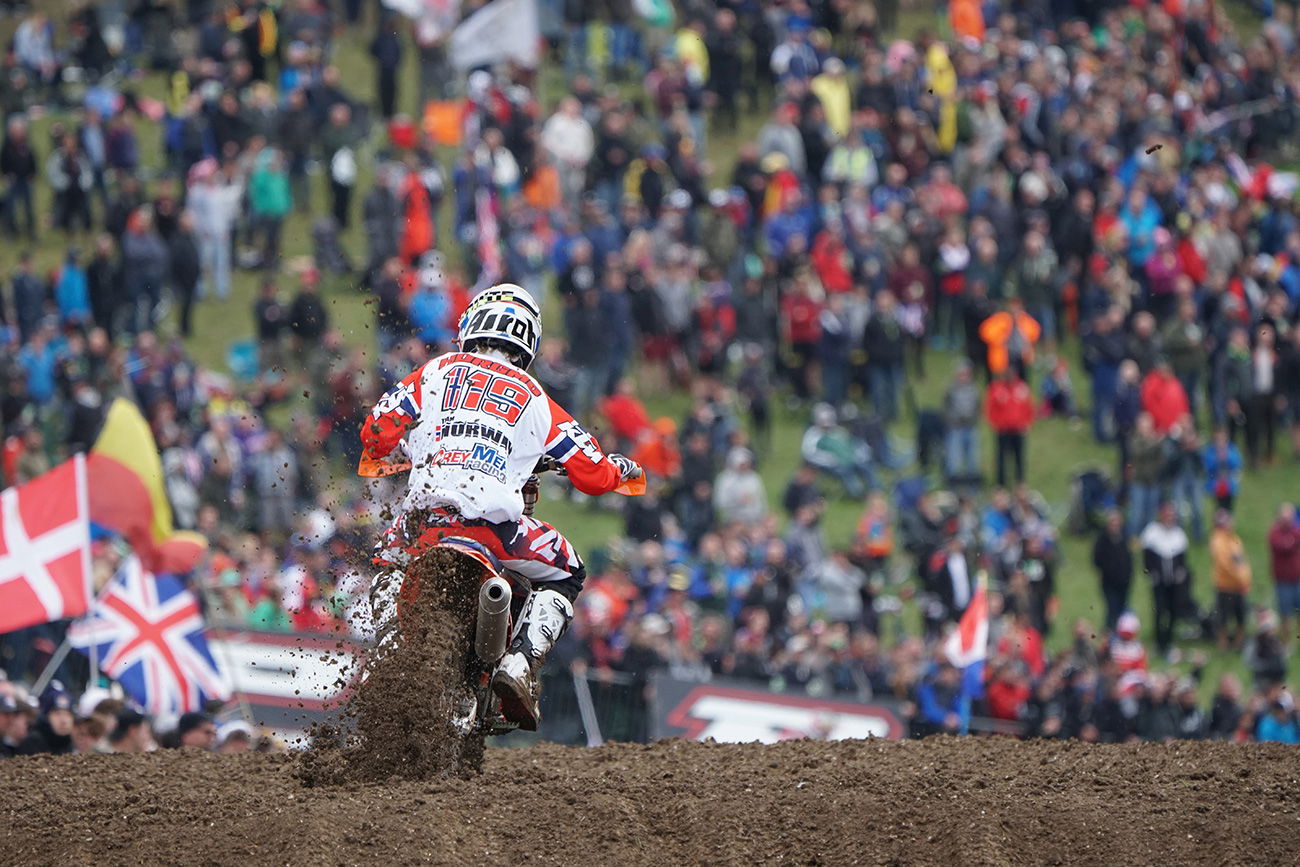
A little motocross action during the Motocross of Nations at Matterley Basin and my first time shooting motocross, also highly recommended if you get the chance! The bokeh here is sufficient to blur the spectators, but it’s nice that you can still identify them as spectators.
a6500 @ 400mm | 1/1000 | f/5.6 | ISO 800 | *Full Resolution Download: JPEG | RAW
A stunning barn owl shot during a birds of prey workshop up in the Yorkshire Dales, UK. I’d really love to shoot one of these beautiful birds in the wild, so I’ve recently setup a barn owl nesting box in my parents barn, now it’s just a case of being patient! Again, the background has been nicely smoothed out to help the owl maintain your full attention.
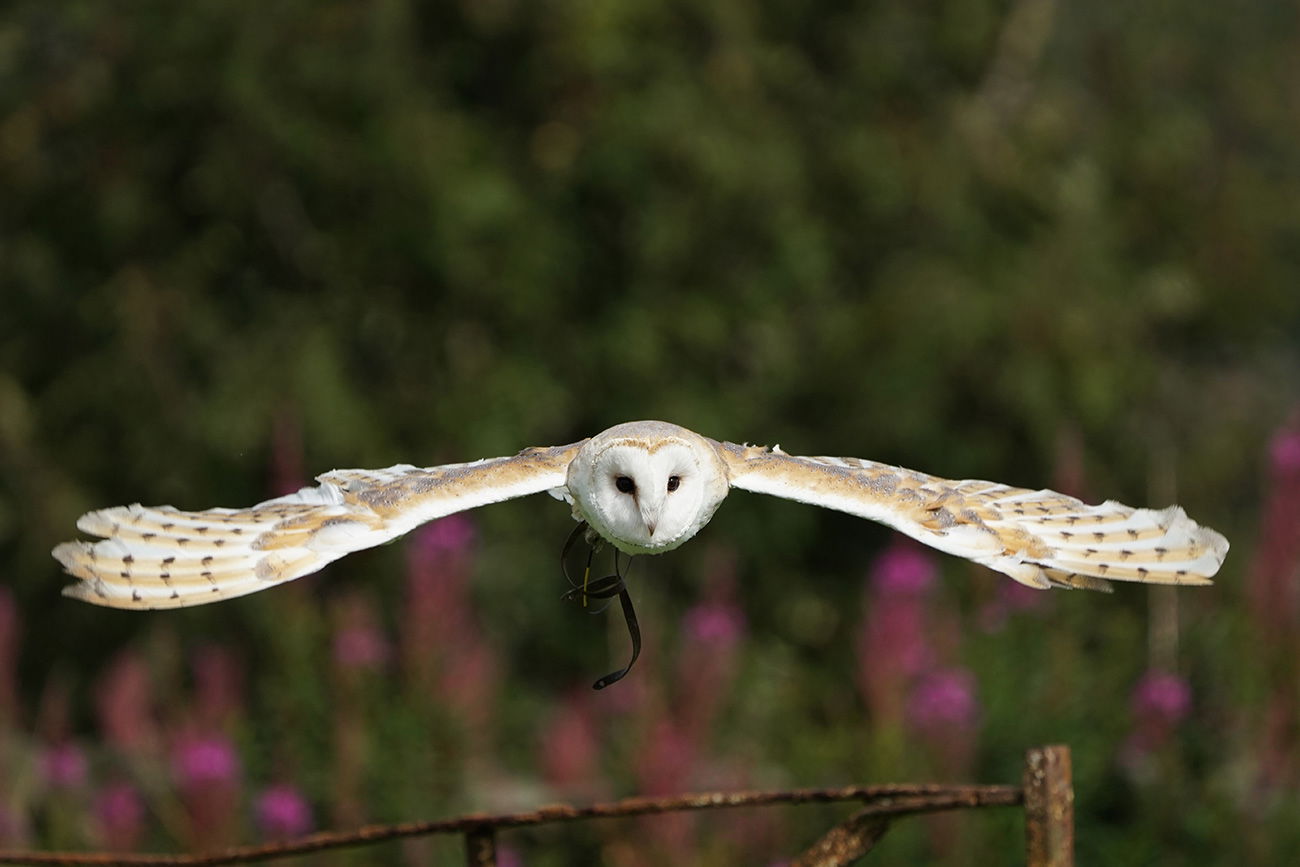
a6500 @ 400mm | 1/2500 | f/5.6 | ISO 400 | *Full Resolution Download: JPEG | RAW
Vignetting, Chromatic Aberration, and Flare Control
If you like shooting white walls with in-camera lens-corrections turned off then you will see the tiniest amount of shading in the corners when shooting wide-open at f/4.5 and 100mm focal length. As soon as you step down to f/5.6 this is less noticeable and is gone completely by f/8. At 400mm and f/5.6 vignetting is pretty much non-existent even on a white wall. Back in the real world you are unlikely to spot any vignetting in your images whatsoever, as it’s unlikely that you will be shooting at 100mm with this lens. I’ve shot thousands of images and as yet have not had a single image that needed to be corrected for vignetting.
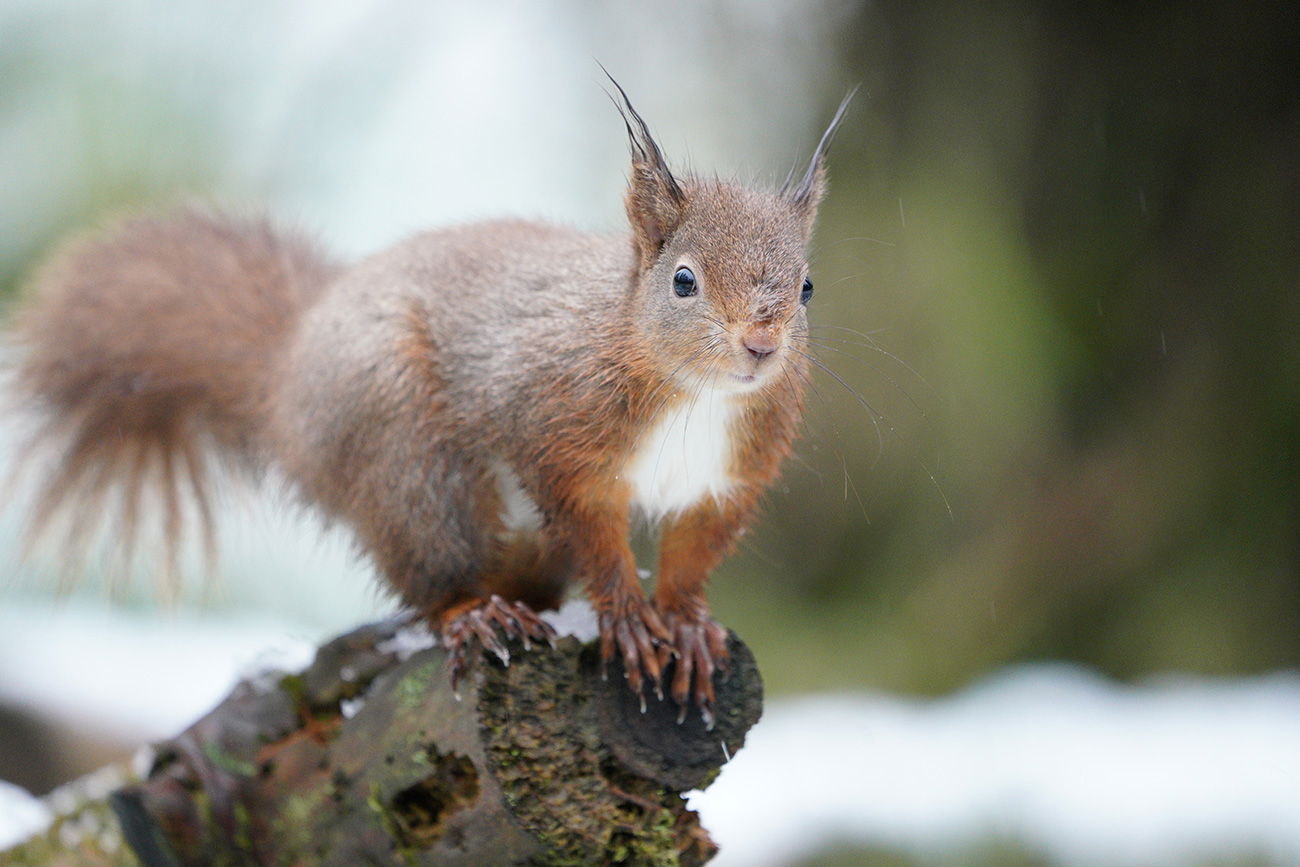
a7R III @ 400mm | 1/250 | f/5.6 | ISO 5000 | *Full Resolution Download: JPEG | RAW
Chromatic aberration, also known as “color fringing” or “purple fringing”, is usually seen along high-contrast edges in images and for some lenses can be a problem. Fortunately with the Sony FE 100-400mm F4.5–5.6 GM OSS lens it is very well-controlled, and I’ve yet to find any evidence of chromatic aberration in the images that I’ve shot to this date.
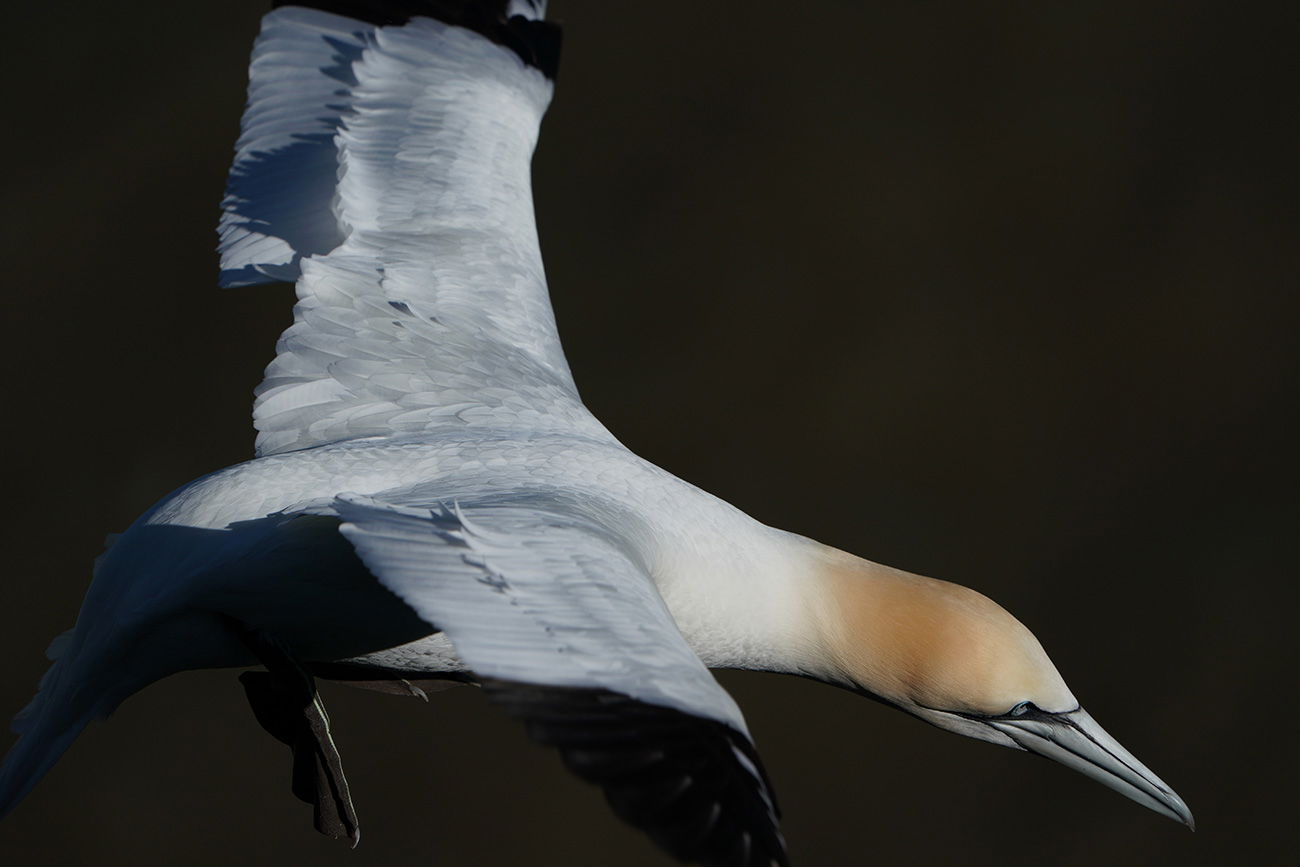
a9 @ 400mm | 1/1600 | f/8 | ISO 125 | *Full Resolution Download: JPEG | RAW
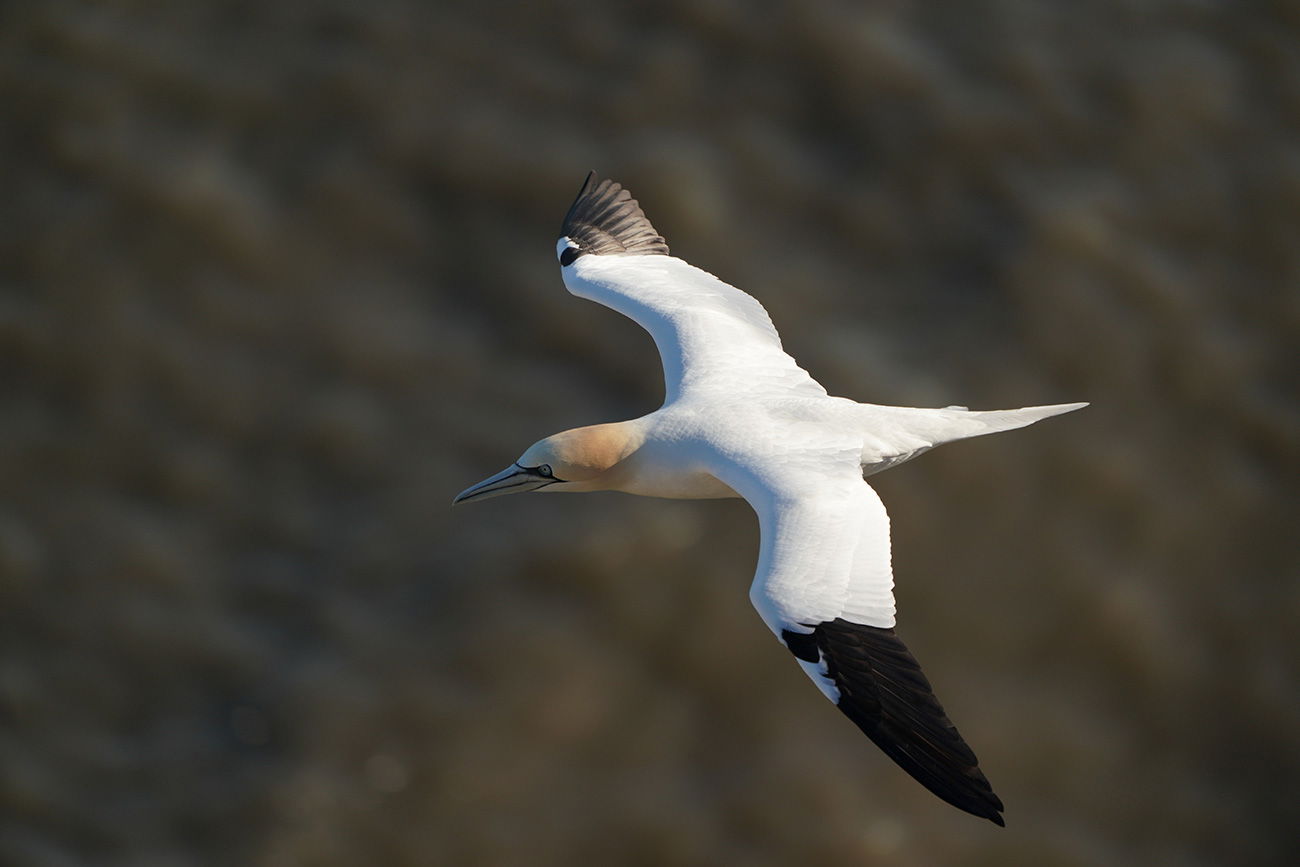
a9 @ 400mm | 1/1250 | f/5.6 | ISO 250 | *Full Resolution Download: JPEG | RAW
Flare control is also excellent, even without the hood attached. You will need to look very closely at the following image to spot the tiniest amount of flare visible whilst shooting directly into the sun.

a7R III @ 100mm | 1/1000 | f/4.5 | ISO 100 | *Full Resolution Download: JPEG | RAW
Low Light Performance
With an aperture of f/4.5 at 100mm and f/5.6 from 164mm to 400mm, this generally would not be your first lens choice for low light work. That said, I’ve used this lens to shoot superbikes on a very cloudy and wet day at Silverstone and the lens had no trouble at all in tracking the bikes and nailing razor sharp shots. I’ve also shot red squirrels in the Yorkshire Dales under a dark forest canopy with grey skies and rain, again I had no trouble nailing my shots.

a7R III @ 364mm | 1/250 | f/5.6 | ISO 3200 | *Full Resolution Download: JPEG | RAW
However, it’s certainly not a low light miracle lens. I have had difficulties focusing on small birds at a distance in low light, especially at the long-end. But often zooming out to 200mm to acquire focus then zooming back in does the trick. I’ve also had difficulty shooting rally cars in a dark forest with very low light, as again the lens would hunt to focus at 400mm but backing off to 200mm and it soon locked on.
The in-built optical stabilization OSS (Optical SteadyShot) is a great help in low light situations. By reducing camera shake you can slow your shutter speed down to as low as 1/100 even at 400mm and still shoot beautifully sharp images of still subjects. The OSS is also very helpful for framing your subject in the viewfinder, especially when at 400mm.
The lens will never be as good as f/2.8 400mm prime in low light situations, but for a fraction of the price it certainly does not disappoint.
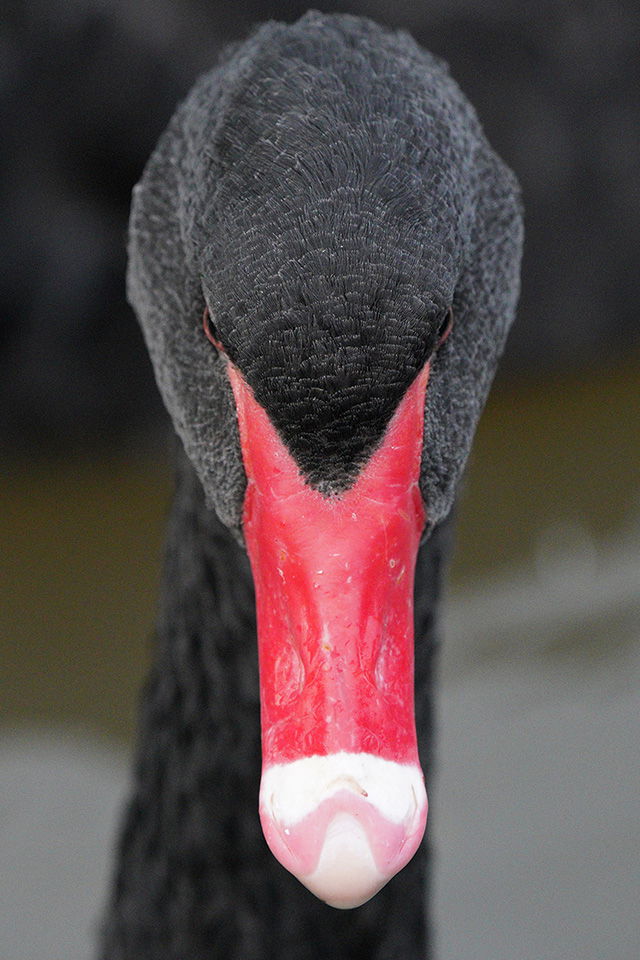
a7R III @ 247mm | 1/1000 | f/5.6 | ISO 8000 | Cropped *Full Resolution Download: JPEG | RAW

a7R III @ 400mm | 1/100 | f/5.6 | ISO 1250 | Cropped *Full Resolution Download: JPEG | RAW
An Excellent Macro Lens
Not only is the 100-400 GM a great telephoto lens, I’ve also found that it makes an excellent macro lens for getting really close to your subjects. The lens has a minimum focus distance of 0.98m which gives a maximum magnification of 0.35x.
I own the Sony FE 90mm F2.8 lens which is a brilliant lens, but since purchasing the 100-400 I often find myself reaching for this lens first now for macro shots. If you are shooting bugs then you can easily keep your distance to avoid scaring them off, which is not the case with the much closer focusing distance of the 90mm. The 100-400 is also virtually silent and the focusing speed is so much faster than the 90mm, giving you a big advantage when it comes to capturing little critters that might have vanished before the 90mm has locked on.

Here are a few macro examples with the 100-400. All of these images have been cropped by 50%, which for me personally still leaves plenty of pixels to play with even on the a9.
a9 @ 400mm | 1/1000 | f/5.6 | ISO 250 | *Full Resolution Download: JPEG | RAW

a9 @ 400mm | 1/1000 | f/5.6 | ISO 800 | *Full Resolution Download: JPEG | RAW

a9 @ 400mm | 1/1000 | f/5.6 | ISO 800 | *Full Resolution Download: JPEG | RAW
Performance with 1.4x Teleconverter
The Sony 1.4x teleconverter (SEL14TC) will extend the reach of the 100-400mm GM lens to 560mm on a full frame camera like the a7R III, but it will do so by sacrificing one stop of light. So at 400mm (560mm with 1.4x) you will now find your maximum aperture is at f/8.
Fortunately this does not appear to slow the focus speed of the 100-400 whatsoever, and if it does it so minuscule that I simply don’t notice it. You’ll also find that the sharpness drops very slightly. Vignetting is more visible with lighter backgrounds at 500mm+. Here are a few shots with the 1.4x attached, for the first I was using a monopod.
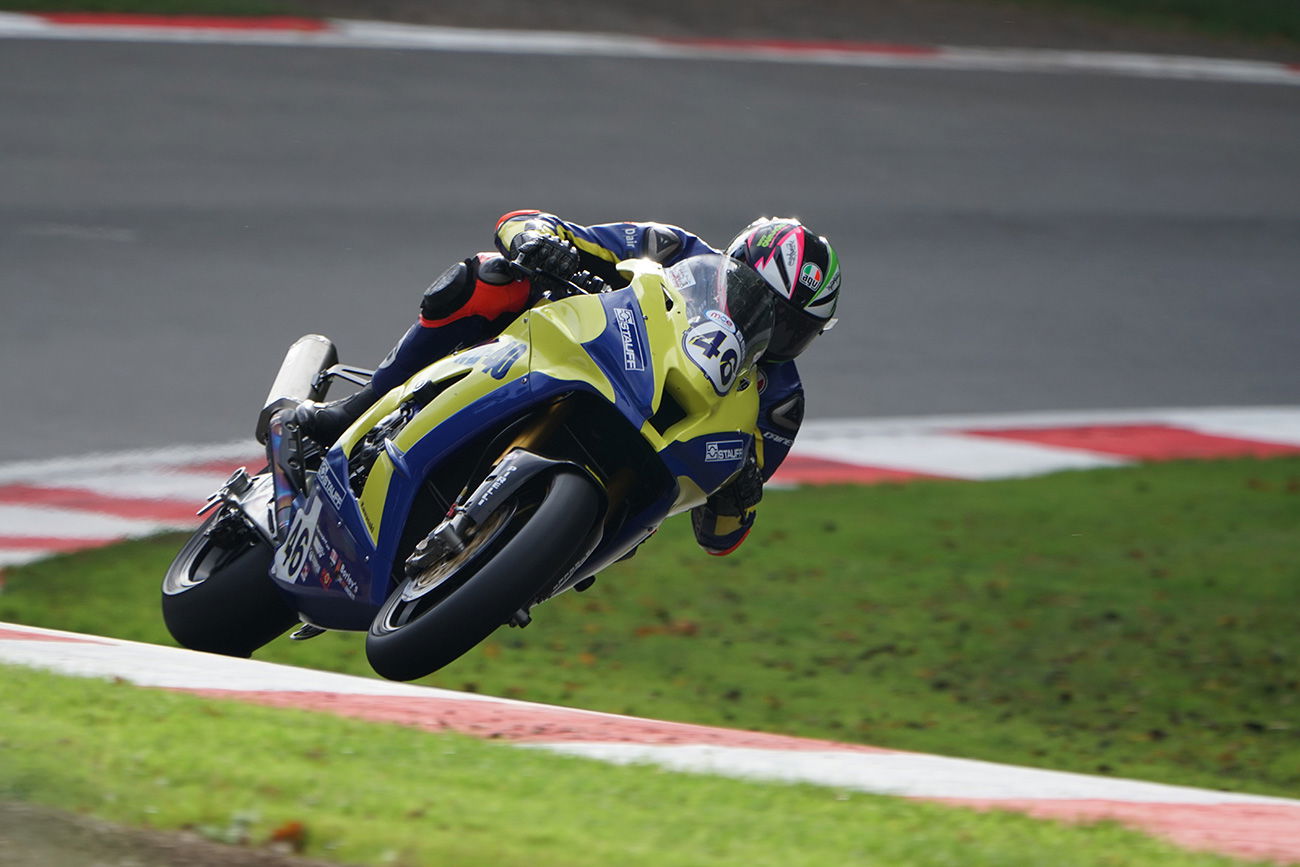
a6500 @ 560mm | 1/400 | f/8 | ISO 400

a6500 @ 560mm | 1/250 | f/11 | ISO 100
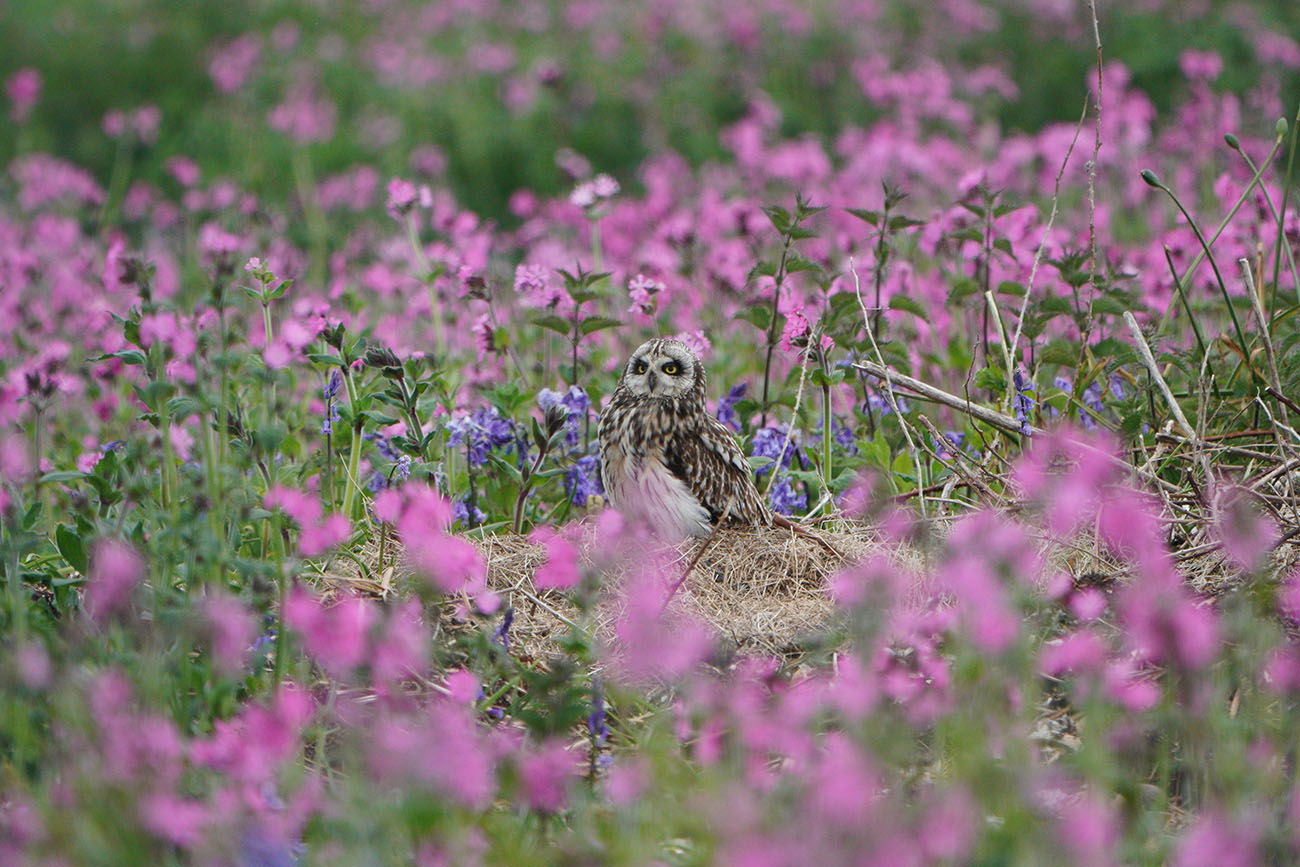
a9 @ 560mm | 1/1000 | f/8 | ISO 2000 | Cropped *Full Resolution Download: JPEG | RAW
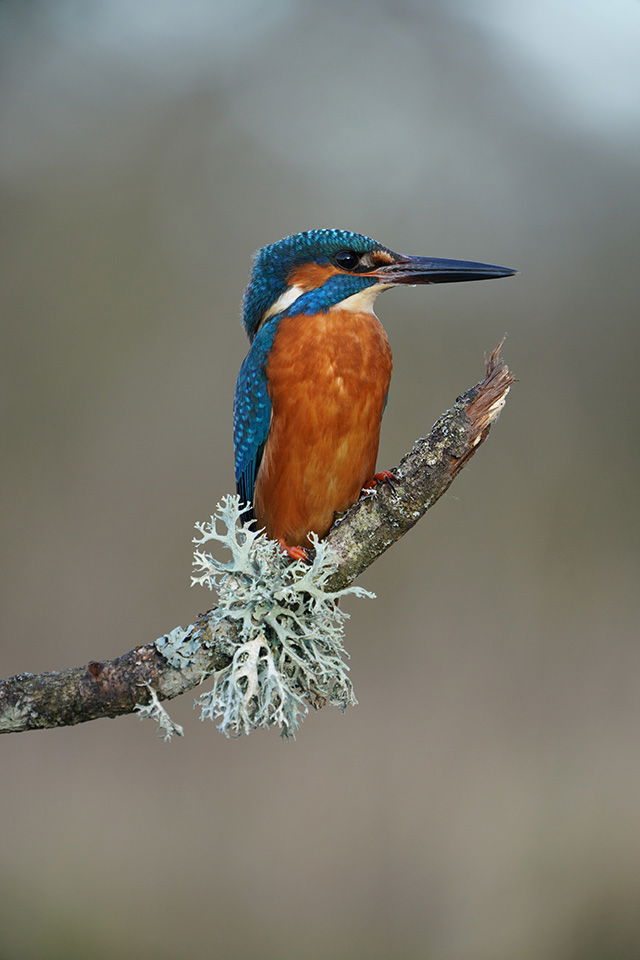
a7R III @ 560mm | 1/200 | f/8 | ISO 800 | *Full Resolution Download: JPEG | RAW

a9 @ 560mm | 1/1250 | f/8 | ISO 400 | *Full Resolution Download: JPEG | RAW
Performance with 2x Teleconverter
The Sony 2.0x teleconverter (SEL20TC) will extend the reach of the 100-400mm GM lens to 800mm on a full frame camera like the a7R III, but it will do so by sacrificing two stops of light. So at 400mm (800mm with 2.0x) you will now find your maximum aperture is at f/11.
With an aperture of f/11 cameras like the a7R II and a7R III will now be pushed into contrast detection to focus instead of the much faster phase detection, and if you are shooting continuously the focus will be locked to the settings of the first shot. With the a6300/a6400/a6500 and a7III phase detection works up to f/11 on these cameras and up to f/16 on the a9. I’ve still shot plenty of fast moving subjects whilst using contrast detection, sure you won’t get the same number of keepers as with phase detection, but it still works very well.
Image quality with the 2x teleconverter is also noticeably softer than the SEL14TC and the AF speed due to the smaller aperture is also slower, surprisingly vignetting at 800mm is not as bad as it is with the 1.4x at 560mm. That said, with the a9 I was still able to grab this shot of the Red Arrows doing a Gypo Pass with the 2x teleconverter attached.
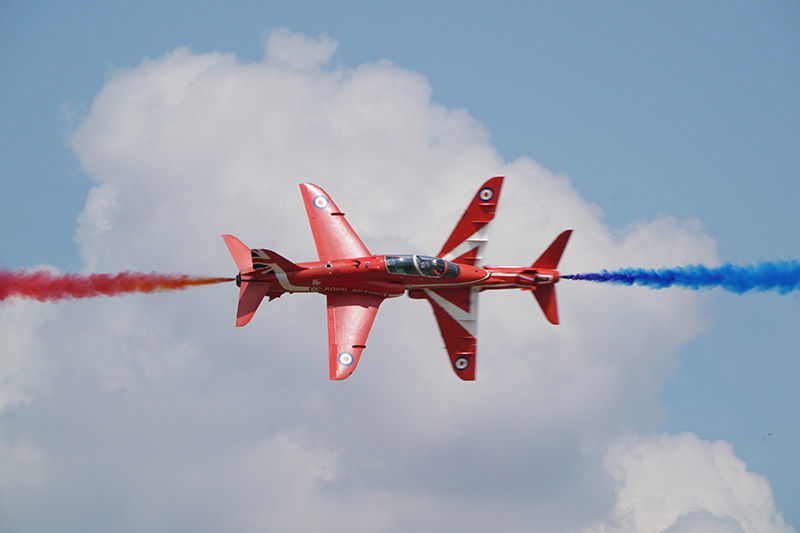
a9 + 100-400 + 2x @ 346mm | 1/2000 | f/11 | ISO 800
Compared To
I’ve never owned or used the Canon 100-400mm or the Nikon 80-400mm lenses, so I can only compare the 100-400 GM with other Sony zoom lenses that I own. Currently my zoom collection consists of the following zooms:
FE 200-600mm F5.6-6.3 G OSS
The Sony FE 200-600mm is a very impressive lens. It’s larger and heavier than the 100-400 but if you find that 400mm is not long enough for wildlife then then 200-600 is probably the lens you’ll want to be looking at. It’s also sharper at 600mm than the 100-400 is at 560mm when you add the 1.4x teleconverter. You can find my 100-400 vs 200-600 comparison here.
FE 70-200mm F4 G
The Sony FE 70-200mm F4 G lens was the first zoom lens that I purchased. It’s very well built, incredibly sharp, and lightweight. If I want to travel light and don’t need any more reach than 200mm then this is the lens that goes into my bag. It’s not as fast and as sharp as the 100-400, but it comes very close indeed.
FE 70-200mm F2.8 GM
Since purchasing the Sony FE 70-200mm F2.8 GM it has quickly become one of my favourite sports lenses when I don’t need the reach of the 100-400. Build quality is very similar to the 100-400 and it’s also almost identical in weight and size. With the constant f/2.8 aperture this lens has the edge over the 100-400mm when it comes to low light photography. The focus motor is not as quiet as the 100-400, you can definitely hear it working away.
FE 70-300mm F4.5-5.6 G
I purchased the Sony FE 70-300mm F4.5-5.6 G lens shortly before the 100-400mm was announced. At the time I mainly wanted the extra reach for shooting airshows and the 70-300mm definitely did not disappoint when paired with my a6500. Build quality isn’t on par with the 100-400mm, but it’s not far behind. The lens is fast, silent and sharp, and its black body makes it a little more discrete than the other white bodied zooms. It is missing the mode 1/2 panning switch which is a shame, but it does get a lock switch to prevent lens creep.
E 55-210mm F4.5-6.3
You can’t really compare the Sony E 55-210mm F4.5-6.3 lens which is a $350 lens with the $2500 100-400 GM, they are worlds apart. But the 55-210 is a great lens capable of capturing some beautiful moments and I have no desire to let it go anytime soon. When I put this lens on my a6500 after using the 100-400 GM it really is night and day in terms of size, weight and handling. If only the 100-400 could be squeezed into this tiny body!
Summary
The Sony 100-400mm F4.5-5.6 GM is certainly not a cheap lens but you do get what your pay for since it’s one of the best 100-400mm lenses available right now.
This lens has spent more time attached to my cameras than any other lens that I own. It has enabled me to get closer to my subjects and achieve shots that simply would not have been possible with my other zoom lenses.
This lens has also helped me to discover a new passion since I’ve found myself spending a lot more time shooting wildlife than ever before, and at the same time learning more about the fascinating animals that we share our small planet with.
However, since I first put this review together Sony has unleashed 3 new telephoto lenses. There’s now the FE 400mm F2.8 GM, the FE 600mm F4 GM and the most recent the FE 200-600 F5.6-6.3 G lens.
I’ve not yet had chance to try either of the prime lenses and they are also well out of my budget but I do now own the FE 200-600 which I’ve compared with the 100-400.
I’m not going to go into the details here so please check my comparison article, but if you shoot wildlife and find that 400mm is often not quite long enough and don’t mind the extra weight (around 800g), then you’ll probably want to seriously consider the 200-600 over the 100-400.
Pros
- Very sharp from 100mm to 400mm
- Fast and silent autofocus
- Well controlled vignetting and chromatic aberration
- Pleasing bokeh
- Well balanced
- Dust and moisture resistance
- Zoom ring tension adjustment
- Flare resistance
Cons
- Focus ring is too loose
- The price
Before You Go
Do you already own this lens? If you do, I’d love to hear your thoughts in the comments below. And if you are on Facebook, then please do post your shots or ask any questions you may have in our friendly Sports and Wildlife shooters groups.
More Sample Images

a7R III @ 400mm | 1/160 | f/5.6 | ISO 2000 | Cropped | *Full Resolution Download: JPEG | RAW
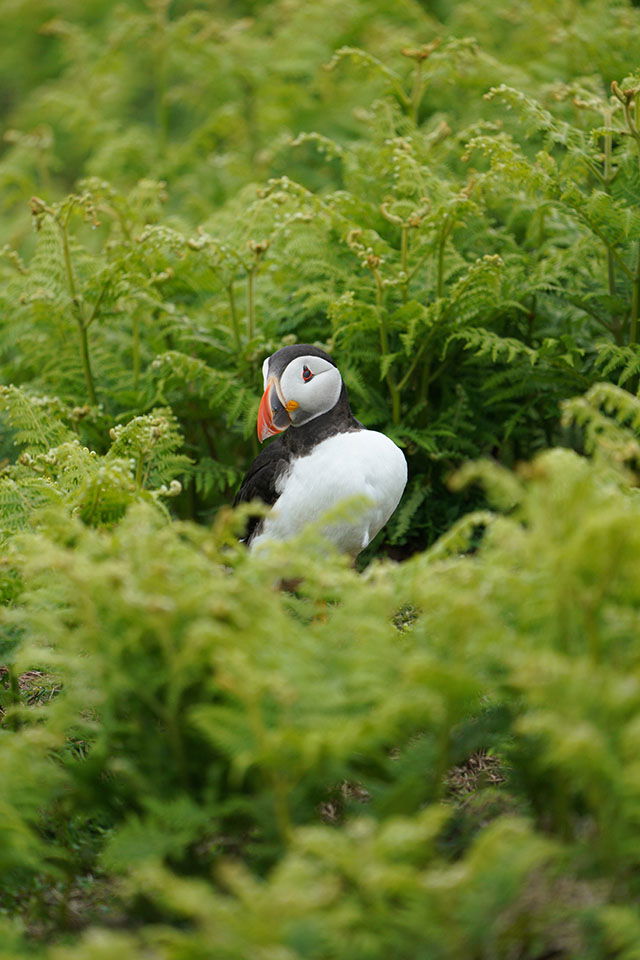
a7R III @ 400mm | 1/1000 | f/5.6 | ISO 640 | *Full Resolution Download: JPEG | RAW
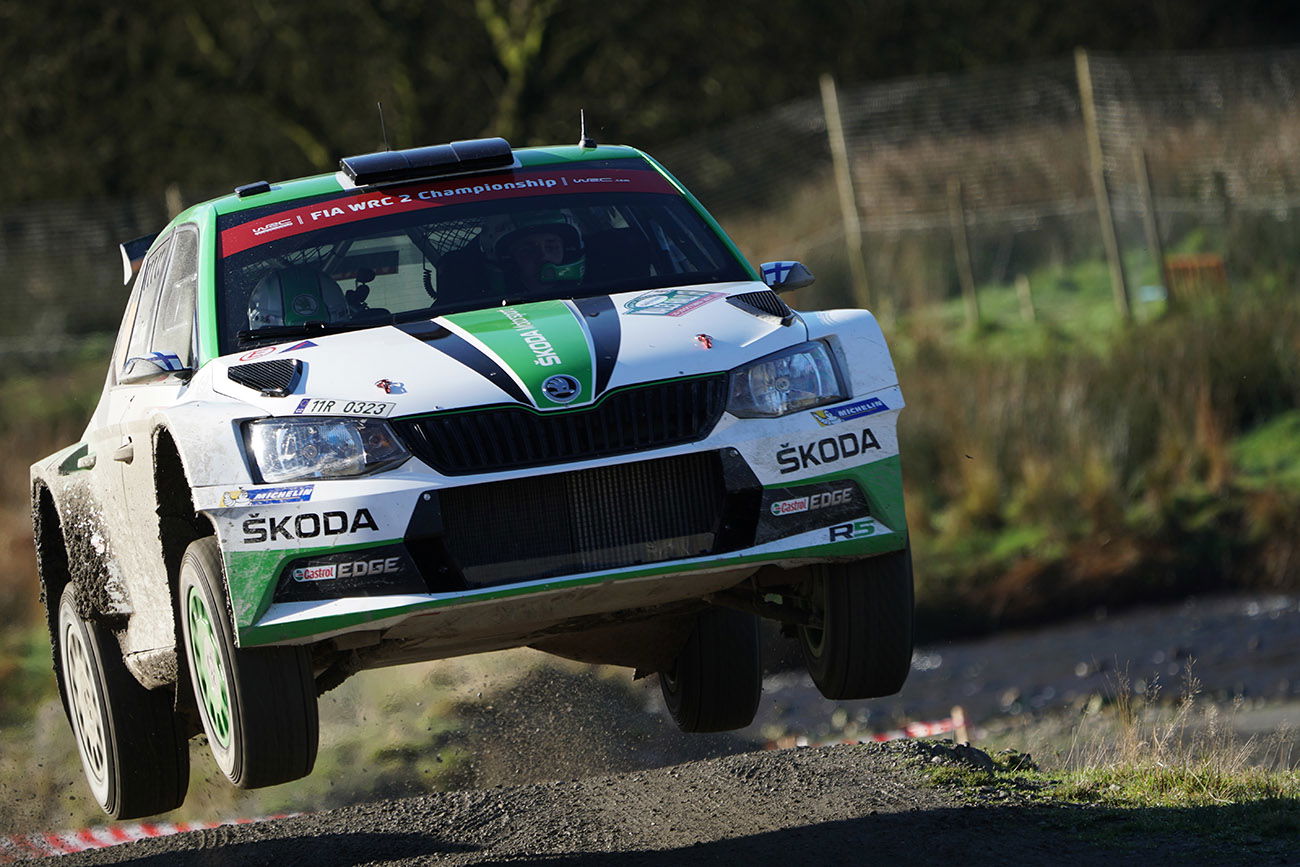
a6500 @ 400mm | 1/400 | f/5.6 | ISO 125 | *Full Resolution Download: JPEG | RAW
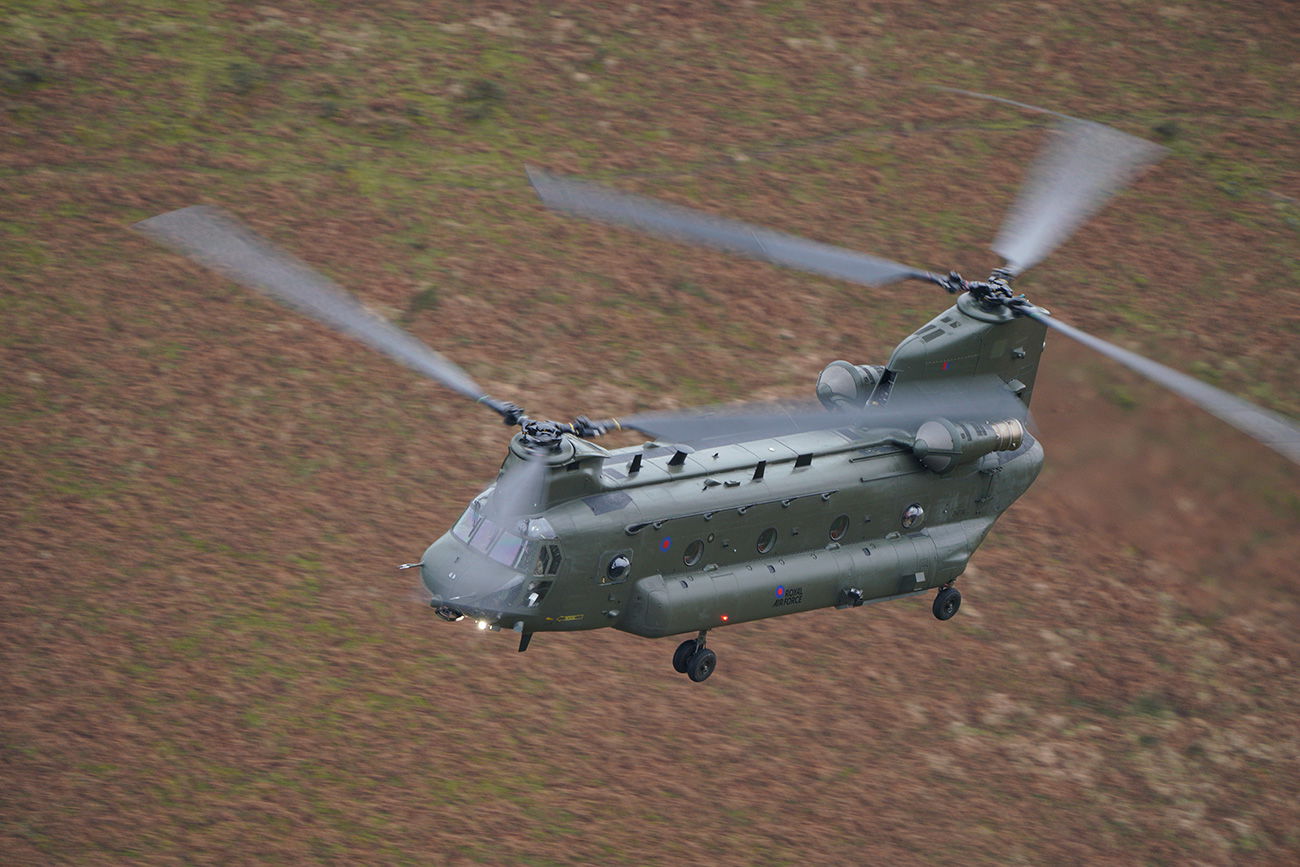
a7R III @ 400mm | 1/125 | f/5.6 | ISO 1000 | *Full Resolution Download: JPEG | RAW
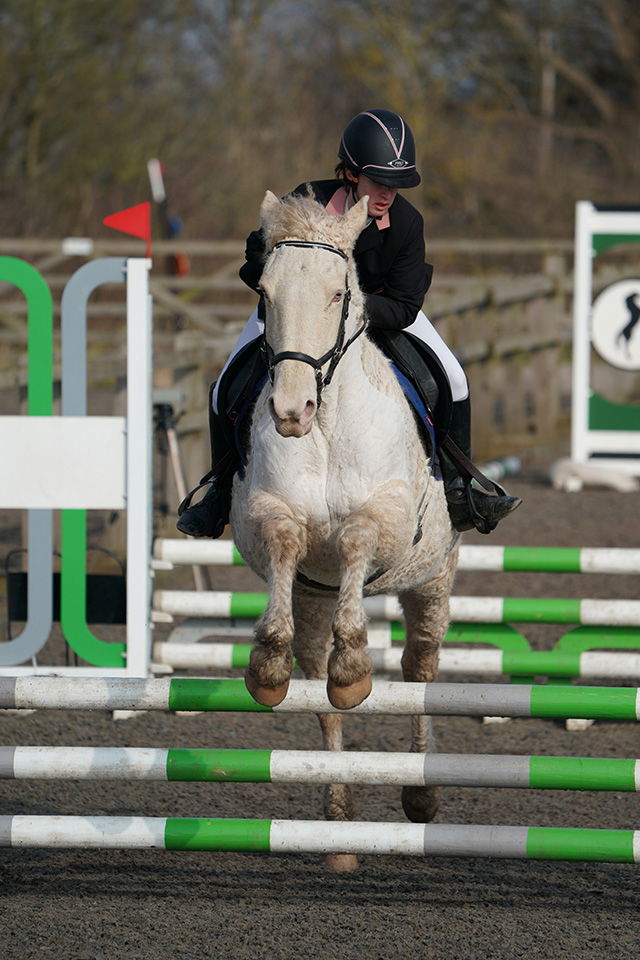
a9 @ 285mm | 1/1250 | f/5.6 | ISO 200 | *Full Resolution Download: JPEG | RAW
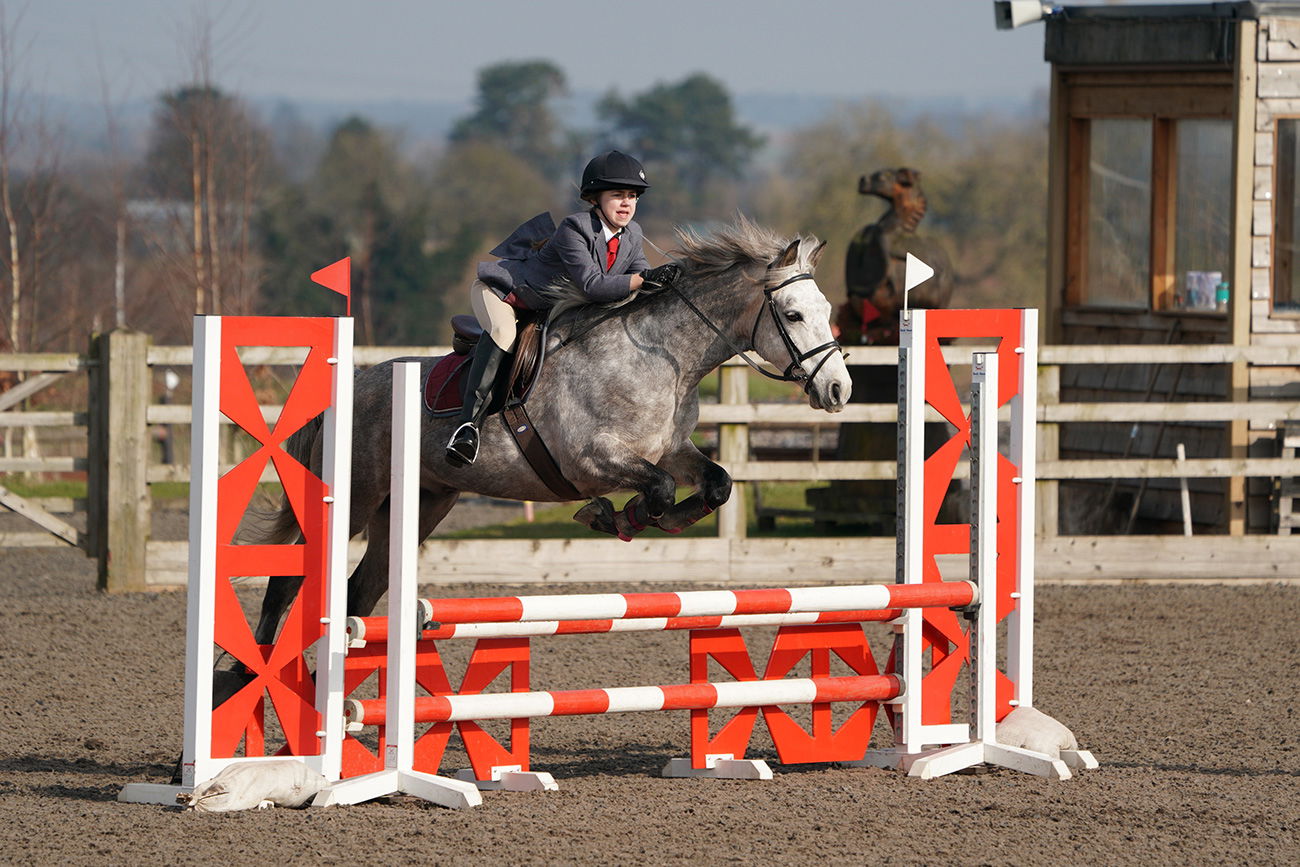
a9 @ 288mm | 1/1250 | f/5.6 | ISO 250 | *Full Resolution Download: JPEG | RAW
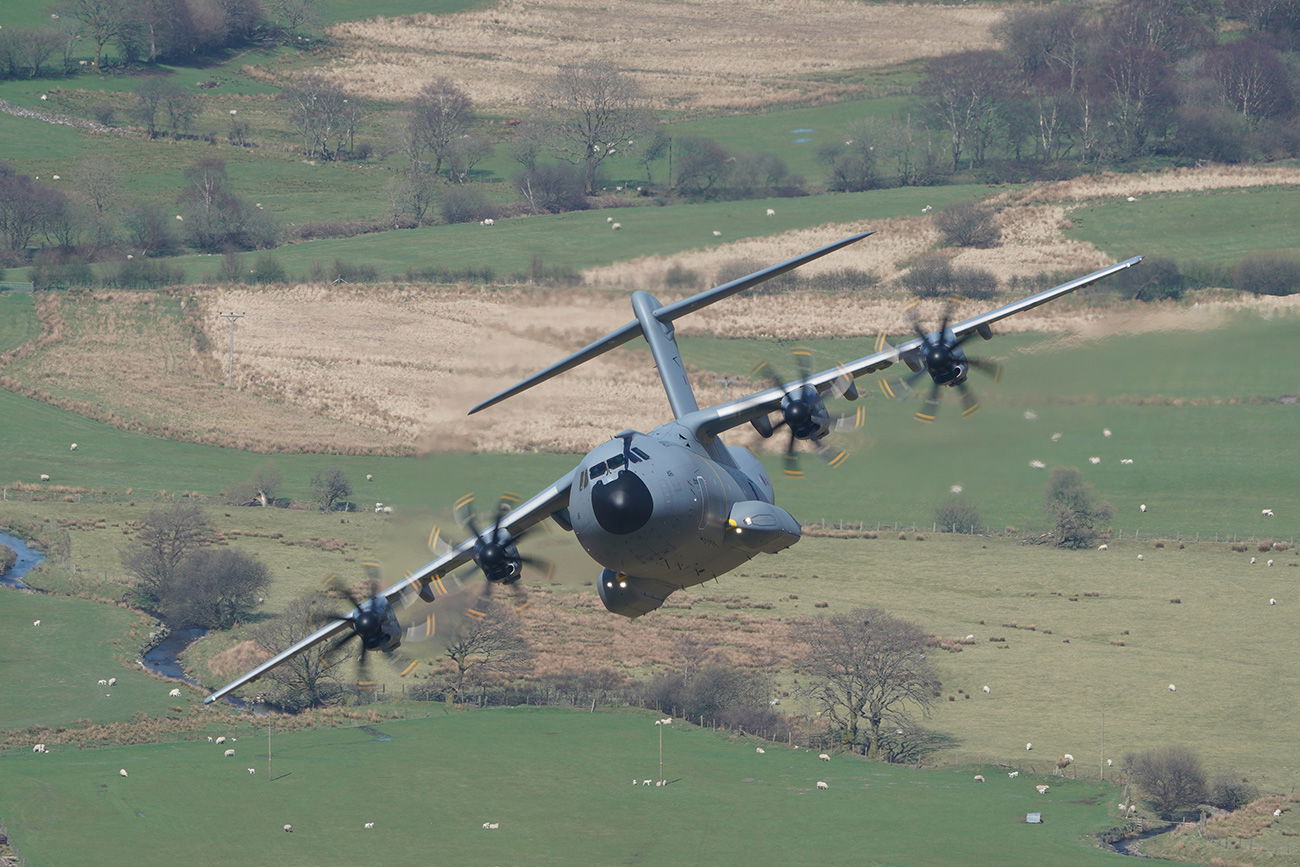
a9 @ 400mm | 1/250 | f/10 | ISO 100 | *Full Resolution Download: JPEG | RAW

a6500 @ 259mm | 1/1000 | f/5.6 | ISO 200 | *Full Resolution Download: JPEG | RAW
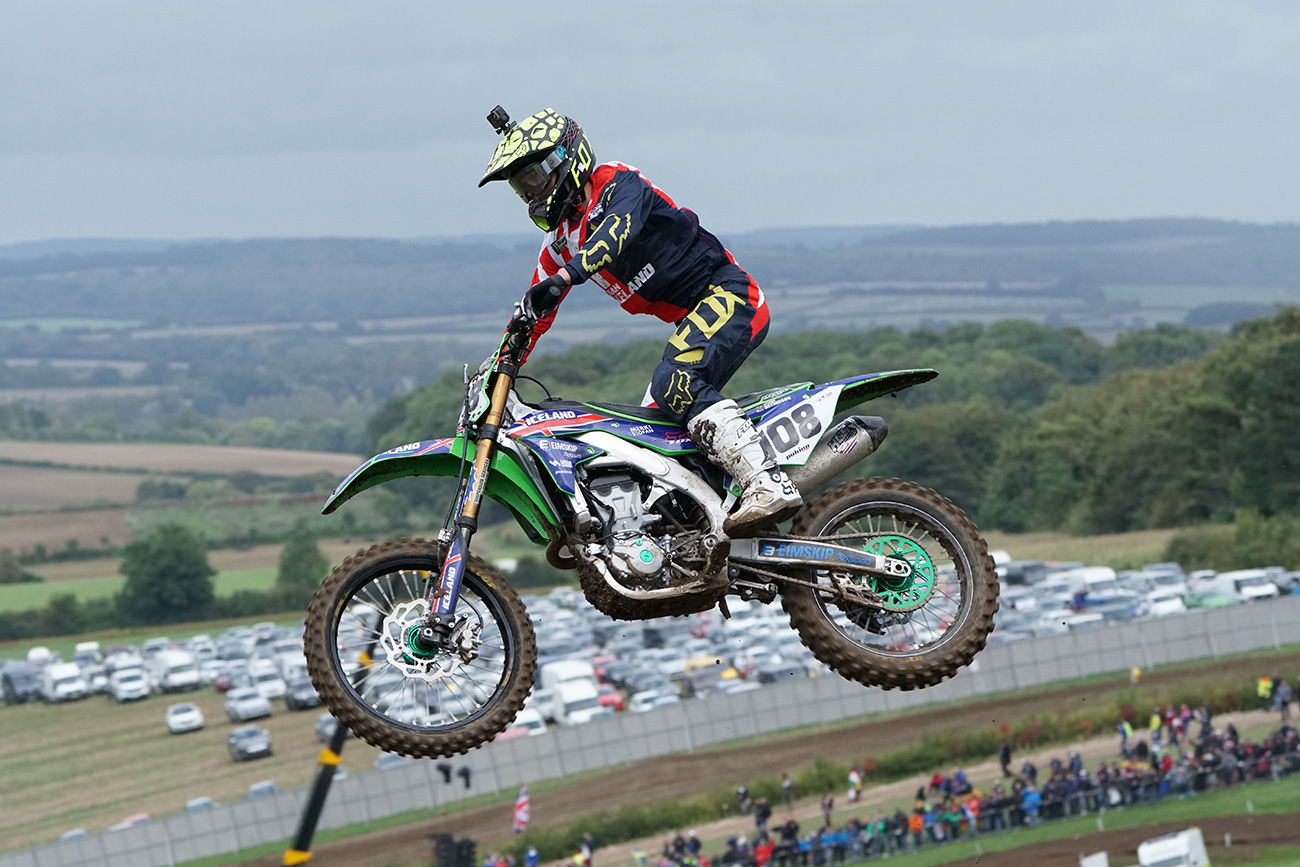
a6500 @ 152mm | 1/1600 | f/7.1 | ISO 1250 | **Full Resolution Download: JPEG | RAW

a6500 @ 400mm | 1/1000 | f/5.6 | ISO 400 | *Full Resolution Download: JPEG | RAW

a6500 @ 259mm | 1/800 | f/5.6 | ISO 400 | *Full Resolution Download: JPEG | RAW

a6500 @ 400mm | 1/500 | f/10 | ISO 200 | *Full Resolution Download: JPEG | RAW


i am having a7 r3 how it will focus if the birds inside the trees
You would most likely need to use a small focus point to avoid hitting any branches or leaves. Typically for perched birds I’ll use a small or medium sized focus point instead of wide area or zone. If that fails then switching to manual is sometimes the only option.
Hi, Tim,
Did you shoot all your photos with a tripod? They are extremely sharp. I just bought the same lens and have yet to take photos as sharp as yours. How can you do that, if I may ask. Thanks.
Sam
Hey Sam, some of the superbikes were shot with a monopod but otherwise I think all the images here were handheld or I might have been resting on something. I’ll normally mention it if I’m using a tripod, although I don’t use them very often as I find them a little too restrictive especially for birds in flight. What are you shooting and what shutter speeds are you using?
Hi, Tim,
Very kind of you to get back to me promptly. I just bought the FE GM 100-400 lens and started to photo birds in chaparrals. I usually choose 1/500 or 1/1000. However, I normally don’t get the amazingly sharp photos like yours. I am trying to figure out why. Anyway, thank you again for your detailed description and analysis of the lens, which is very helpful.
Sam
How are you getting on now Sam? 1/500 is probably a little slow for birds, even if you can’t see it clearly they will often be movement in they are perched in trees or the wind might be blowing their feathers. I’d definitely go with 1/1000 minimum if the light allows.
Thanks for a great review – I like the focus (forgive the pun) on real world images rather than test targets etc…
I got my 100-400 yesterday, having been very impressed with the words and wonderful images in this review. After spending a day with it, I’m very pleased with it. I’m happy with the focus ring tightness, but it’s geared much “quicker” than the Sony 70-200 f4, and takes a little getting used to.
I will be selling my 70-200 as this frankly blows it out of the water. I was hoping to be impressed, and just wow!
Glad that you enjoyed the review Doug! Also happy to hear that the 100-400 is living up to your expectations! 🙂 I hope the current lockdown conditions don’t restrict you from using it too much. I can’t get to my favourite place to shoot red kites right now, but hopefully soon! Take care, Tim
Hi Tim,I dropped you a message on Instagram if you get chance to look that would be great! 🙂
HI!
Great article. I have the lens and love it. I was converted from 80-200/2.8 Canon to their 100-400 by a travel photographer friend several years ago and haven’t looked back, I rarely found myself wanting the 80-200 and eventually it stayed home or in the hotel to reduce weight. I’ve switched to Sony A7RIII and A9 and with the better focusing with a TC, first got the 100–400 and indeed, I rarely carry the 80-200 Canon + Sigma MC-11 to augment.
I have a question about how you set up the focus on the dirt for the superbike shot with the back of the bike OOF. I have my thoughts, but would love to hear how you got it.
Thanks Stacy. It definitely makes outings more enjoyable when you aren’t carrying so much weight, this was one of my main reasons for shooting with Sony as well. Regarding the bike shot, to be perfectly honest it was just a lucky shot or perhaps an unlucky one, as I was actually wanting to focus on the rider but there was so much dirt coming up that the AF locked onto that instead. So there is no special technique I can share with you here unfortunately. I think I was probably using a wide focus area so that probably helped the AF to jump to the dirt first instead of the bike. Hope to get to another motocross event soon so I’ll have to see if I can re-create it! 🙂 All the best, Tim
Hi Tim,
Thanks for the great reviews of Sony equipment and accessories ( very helpful) and photos. I’ve bought a few Amazon bits and bob’s through your site so hope that helps.
Now I’ve finally bitten the bullet and gone for the native Sony 100-400mm plus 1.4x converter on my A9, I have now have saved up a few more questions. These are mostly around the AF settings as I’ve had a fair number of images I haven’t been happy with with regards to sharpness (too soft) with the 100-400mm, both wildlife distance and ‘macro’ shots of dragonflies etc. I’ve been using 1.4x converter on and off, to match a similar reach to my cropped Canon 7D2.
Previously on my Canon 7D2 I was using spot focus and generally got a good in focus macro/ moving wildlife shot about 1 in 4 attempts.
For the A9 I don’t think I have got my settings sorted yet. After watching many of Mark Galer’s tutorials I have trying a number of settings. I’m not sure his advice re AF modes shooting wildlife applies in most cases since birds, squirrels etc do not fill the frame (unlike most of his wildlife examples!) and therefore tracking:zone wouldn’t necessarily focus of the part of animal you wanted it to?
I have been using tracking: flexible spot S for most of mine but still not sure it’s the best option? Would tracking:flex spot large be better as it will cover more focus points?
Also for macro shots of butterflies etc I will be trying the NON tracking flexible spot S as tracking flex spot S doesn’t seem reliable? (in terms of keeping to a specific spot on the subject e.g butterflies eyes.
My BIF shots so far haven’t been too sharp either (although tracking:wide does a great job of locking on ), although this might be that I need to increase my speed to 1/1500 and above. I must admit with my Canon I often left it in P mode.
In general for wildlife I am using manual mode (being brave) with AF-C, H speed shutter release, auto ISO, tracking: flex spot S, priority set in AF-C as release, AF tracking locked on (1), no back button focusing, no pre-AF, multimetering, face priority on (don’t know whether than would affect wildlife shots?), shutter type auto.
Any suggestions would welcome!
And yes, I’m hoping for good things from animal eye coming soon too…
Cheers Mark
Hi Mark, I hope you are doing well and enjoying the British summer 🙂 Thank you very much for using my links, I really do appreciate that! Glad to hear that you have picked up the Sony 100-400 GM and the 1.4x for your a9. Mark Galer’s tutorials are really good, so you are definitely on the right track there. Yes all images do look amazing when you are close enough to fill the frame (sadly not too often with wildlife).
Sometimes with tracking wide you can risk it locking on to the wrong part of your subject or jumping off onto another subject if you have a busy background. I’m definitely favouring the tracking focus area right now with the latest v5 firmware update as opposed to the other focus areas. I was experimenting with a peregrine recently at a local birds of prey centre and found that the tracking: centre option worked very well providing I locked onto the head. I think flexible spot small could be tricky to get in the right place especially if your subject is moving fast like a bird in flight, I’d probably go with large.
Nailing the butterflies eyes is always tricky especially with autofocus. Using a small spot will help but I’ll often use manual focus and focus peaking to ensure I nail the eyes providing they aren’t in flight!
For BIF shots I always find that 1/1600 is a safe bet unless they are pretty close then 1/1000 is also do-able. If you check the shot of the Red Kite above then this was at 1/1600. If they are further away then you shutter speed will need to be faster, of course it depends on the speed of the bird too! 🙂
I fix my shutter to electronic as I always use this with the a9, so it just avoids the camera having to think about it. I also turn face priority off since with wildlife I don’t want it looking for faces and wasting valuable processing resources.
You may have seen it already but this setup guide for the a9 and birds in flight by Mark Smith is excellent: https://www.youtube.com/watch?v=z9hCwoSIKzc
All the best, Tim
Thanks very much Tim, I’ve taken your advice and taken face detect off and electronic shutter on (was auto). Will try the tracking: centre for wildlife if the animal is not big or slow enough to get the flexible spot small locked onto the eye. With the tracking: flex spot small it is difficult to see the focus square area under the tracking box and tends to move over the edges of the animal.
I am now favouring the non- tracking: flexible spot although it’s a shame it’s not as small as the Canon spot AF area. It also seems a bit sluggish to refocus sometimes and needs reactivation by finding an edge or half pressing the shutter button.
Yes studied both Mark Galer and Mark Smith’s latest videos on settings (both great photographers) but they have different approaches and MS’s priority is clearly BIFs ( I’m certainly not up to back button focus yet) MG’s is more mixed but neither is quite what I’m after. I certainly don’t agree with MG’s tracking: zone for wildlife as I find, for example, a squirrel does not always have his head nearest the focus plane, it’s usually another part of its body.
Clearly I still have a lot to learn re the Sony A9…
Another question for you if you don’t mind: I am still finding my battery only lasts for two thirds of a day while shooting all day in a RSPB reserve for example.
I’ve turned off WiFi, pre AF, monitor off (set LHS navigation for monitor/ EVF toggle). I have set my EVF to +1 brightness but set my camera sleep to 10 seconds ( would have preferred a 30 second option). Touch screen off.
Is there anything else I need to adjust?
Thanks again!
Mark
Hi Mark, I think one needs a degree in computer science to understand all of the functions and features of the a9! 🙂 Regarding the battery. I would never expect to get through a day with just one battery, I always have two with me and sometimes I’ll use the battery grip as well. I’ll often have my power save time set to 2 minutes as it annoying me if it goes off too quickly. The EVF will drain more battery than the LCD. I often use Sunny Weather mode and was a little worried that this would drain the battery a lot faster. However I recently tested my a6400 shooting 4k and with sunny weather mode enabled it only drained a full battery a couple of minutes faster when shooting 4k. So I’d expect something similar for the a9. I know they are not cheap, but a second battery is a good investment! 🙂 Have a great weekend! Tim
Thanks Tim. I’ll invest in another battery (that will be three in total) and another charger. Bought a Godox V860iiS flash (through your link). I’m thinking of getting a XPro-S transmitter so I can use the flash on a bracket for macro. I’m assuming that’s what I’d need? I used a connecting cable on my old Canon bracket setup.
I’ve previously used a diffused flash in the rain forest when light was low so I’m hopeful this will work as well as Canon’s.
Cheers Mark
Hi Mark. 3 batteries should definitely be plenty for a long day out shooting, it’s very rare that I’ll need to make use of a third battery.
The Godox V860iiS is a great flash for the price (I have one too), thank you for purchasing it through my link! 🙂 You would either need the XPro-S trigger or the X1T-S trigger. I don’t own either myself so can’t comment on them but a quick search on DPReview came back with this: “In general terms, the XPro is a far better controller than the X1T. It has a better and clearer display. It has far fewer hard to remember button codes. It has the TCM function which lets you fire a shot using TTL and then convert the settings used to manual so you can fine tune them.” So I’d probably go for the XPro-S, will have to pick one up sometime!
I’ve not experimented much with using flash for macro photography. I did recently pick up the Rotolight RL48-B LED Ringlight which I hope to try out soon though. I’ll let you know how that goes! Tim
Hi Tim, good to hear about the Godox flash unit. I still have my Sigma Canon fit 105mm macro lens so will try that out. Seems to focus okay with the MC11 but sadly not with the Sigma 1.4x TC which is how I used it before on the 7D2. With the TC it occasionally works but more often than not blacks out the EVF and comes up with error messages. Still, I have my old trusty 7D mark 1 so have that as a backup macro.
Taking of backups, I’m looking out for the new cropped Sony as an A9 backup. I’m hoping it will be available soon- before my next wildlife holiday would be good!
Thanks Mark
Hi Mark, yes it’s definitely a good time of year for macro photography! 🙂 I need to finish off my Sigma 70mm macro review then I hope to get the Sony 90mm macro reviewed. Yes the rumoured a6700/a70000 or whatever it may be called would make for a great second body. 36mp APS-C would be nice! The 200-600 might be announced today which will probably be my next purchase if it’s reasonably priced. Already curious about how it will compare with the 100-400. Tim
Hi Timothy, great article and photos. I just submitted requests to join some of your FB groups but thought it may not hurt to post a question here for all to see. From what I understand the A9 is the premiere camera for shooting fast moving subjects like birds in flight but owning the A7Riii and 100-400 I’ve been doing my best to get sharp images of Ospreys, Eagles and many other birds in flight. While I do get some incredible sharp images I find I often get a lot of not perfectly focused on the eye photos when background is anything other than a clear blue sky, some examples would be water, tall grass, buildings, etc. I was hoping to gather some ideal settings information, I’ve tried setting my sensitivity from 1 to 5 and it seemed to work better on 2 or 3 but I read using 1 is the best. In addition would turning off live view on (in other words wysiwyg) when using anything other than the most open aperture be wise? My reasoning being if the lens is stopping down to give a proper preview it’s also letting in less light and I’d guess affecting the AF system. I’ve also tried wide, zone and expand flexible spot focus areas, I use back button AF and AF-C. Any tips or suggestions much appreciated.
Thanks for the positive feedback Robert and thanks also for joining the FB Groups 🙂 The a9 is the fastest when it comes to AF performance, followed by the a7III and a7R III. The a7R III + 100-400 is definitely a nice combo and like you are well aware will certainly nail birds in flight shots. If the background is clear then I just leave the tracking sensitivity on 3 which is default, if there is anything else in the frame like other birds or trees/branches in the background then 1 will do a better job at keeping the focus on your subject once locked on. Regarding the focus area, you could try expand flexible spot if there is a lot going on in the background. Turning Live View off shouldn’t make a difference even if you are shooting at f/11 since the 100-400 GM on the a7R III will open wide to grab focus before stopping down. Nailing the eyes is always going to be tricky. Hopefully Animal Eye AF will help in the years to come, but it’s going to be some time before it’s tracking the eyes of birds in flight. All the best, Tim
Thanks for the detailed reply, I am going to practice using expand flexible spot on BIF. I wasn’t aware the 100-400 opens up for each shot but that’s a great bit of information. Enjoying the FB groups, great to exchanged ideas and see what others are doing.
You’re welcome Mark. Which country are you in? Definitely worth shopping around. A friend picked one up for a little over £2k here in the UK.
Yes I’m in the UK Tim. Was looking in eBay and mpb. Not sure about 2nd hand as you might be buying someone’s lemon I guess. Hoping the MC11 adapter works on my Canon lenses to soften the blow of replacing my 6 or so lenses. I guess I’d need a flash as I often use the integrated 7dii’s as a fill in.
Thanks for the great reviews.
Mark
I picked my a9 up from Park Cameras. It was an open box deal and saved me around 1k off the retail price at the time. So definitely worth checking for open box deals too. Not a big flash user myself but I know that the Godox VING V860IIS TTL is very popular and a lot cheaper than the Sony HVL flashes. The Rotolights are quite nice too., I have one of their little ring lights. Have a great weekend Mark! Tim
Thanks Tim. I’m probably going to P/ex my 7Dii body, grip and flash to buy the A9 body and MC11. I assume the A9 doesn’t have a built in transmitter for off camera flash? The flash is useful in rain forests and woods for birds to bring out the colours just as a quarter power fill in.
Have a great weekend too! 🙂
Have managed to get a reasonable p/ex on my Canon and other bits so now a proud owner of a A9! Updated the firmware so will look at how good it works with my canon and Sigma lenses with the MC11 adapter….
Congrats on the new camera Mark! 🙂 The MC-11 tends to work best with the Sigma glass, although it does work well with some Canon glass. If it’s slow with Canon it might be worth trying the metabones adapter as well. Enjoy shooting with the a9! 🙂
Thanks Tim. I’ll see how it performs with the Canon 100-400. If it’s not so good then might go for the Sony 100-400 and the 1.4x converter which will make it similar reach to the Canon 7D. Will try to phase out the adapter by buying new Sony lenses over time…
Will probably go for the 24-105 G f4 as a general purpose.
Sounds like a plan. If you have any questions just let me know Mark.
Thanks Tim. I’m sure I’ll have some questions…:-)
Hi Tim, I’m thinking of moving from a Canon 7dii to the Sony A9 and in transition using the Sigma MC11 adapter.
Although I know the resolution on cropping will be better than the Canon I am worried by the ‘perceived’ lack of reach of my 100-400mm (whether I keep my canon 100-400 or go for the Sony equivalent). Is there a customisable button on the A9 that will give me instant crop (zoom) effect through the EVF. I think there is a button on the back of the A99 but can’t see one on the A9?
Thanks
Mark
Hi Mark. I don’t think that you will be too disappointed with the a9 especially with the new firmware v5 update that has been released and added lots of new features. Regarding your question. Yes you can set the a9 to APS-C/Super 35mm mode to get a 1.5x crop which is visible on both the LCD and though the EVF. You need to select this in the menu (Camera Settings 1) but you can also assign it to a custom button that simply toggles between full-frame and aps-c. You will lose resolution with this setting though. It will drop to 3936×2624 pixels. Hope that helps! All the best, Tim
Thanks for the swift reply Tim.
I’m not looking for the actual crop setting but the EVF image zoomed in to give the appearance of 1.5x if you see what I mean. (To get a better /closer view of the subject through the EVF).
In general I am looking for a package for primarily wildlife shooting that is lighter than my current Canon 7Dii battery grip and 100-400mm and that has better focus tracking and IQ. I was initially thinking of MFT (say a Pana G9) but in dim woods/rainforest I am thinking the ISO push is going to be a stretch IQ wise? I realise the Sony combo is not that much lighter on paper but it would certainly feel lighter? And of course the HD video is a big bonus.
Cheers
I think I see what you mean now Mark. There is also an option called Focus Magnify. This will let you zoom in using both the LCD and EVF. If you assign it to a custom button then on the first click you get a small box to help you pinpoint the area you want to zoom in on. The second click zooms in (not sure what the magnification is exactly), and the third click zooms in again. The a9 is certainly pretty light, but the 100-400 soon starts to add some weight. I’ve not used the 7Dii but I’m guessing the a9 will be lighter and use less space in your bag too. If you have a local camera shop it would definitely be worth trying to get your hands on one. If I were buying an a9 today I’d probably try and pick up a used one to save a good chunk of change. Tim
I own the 100-400 and use it on my A9. Just can’t seem to get sharp pics and i also get quite a bit of noise. What might I be doing wrong.
Hi John. It’s hard to say without knowing what settings you are using, what you are shooting, and what kind of distance? For birds in flight for example, I’d normally be shooting in manual mode, with the shutter speed set to at least 1/1000 sec or higher, aperture will be f/5.6 at 400mm, and auto ISO unless the light is fairly stable. If the background is clear then I’ll use wide-area focus, but if there are things like trees/branches in the way then I’ll change to center or flexible spot. If you are panning with your subject then make sure you have the lens set to Mode 2. I often turn it off completely with anything over 1/1000 sec shutter speed. If you are shooting something at 100m plus distance then it will always be a challenge to get sharp shots at this distance, other atmospheric elements also then come into play like heat haze which can ruin the detail in your photos. The a9 and 100-400mm GM combo is definitely capable of producing some very sharp images. Hope that helps a little! Tim
Great review
Thanks Sean, glad you liked it 🙂
Hi Timothy… OUTSTANDING Review… after reading your Review Yesterday i did Head straight to my Camera Shop and Purchased it … now I’m stucked in between the TCs for my Passion of Aviation Photography … which One to get for Air shots from the ground , the 1.4x or the 2.0x ? Please … would appreciate a swift reply as got a good Deal for Both for EOFY right now … thank You . P.s : im using a Sony A7S
Kind regards.
Gerard.
Many thanks for your positive comments Gerard. I’m chuffed to hear that you’ve now added the 100-400 to your E-mount collection 🙂 I’d probably stick with the 1.4x to be safe. I’ve not used the a7S, but with the 2x you will be at f/11 as opposed to f/8 with the 1.4x. If you are using a fast shutter speed to freeze jets like 1/1000th or higher, you might find you are having to boost your ISO to compensate. AF will be a little slower too, and the images will also be a little softer as Micky mentions in the comments. Personally I’d prefer to crop than use the 2x for airshows or any fast moving subjects. I hope you get as much enjoyment out of the lens that I have. If you are on Facebook it would be great to see your shots our groups too. I don’t have a specific group for aviation just yet, but feel free to post in the generic Alpha Shooters Group. Happy shooting! Tim 🙂
The 2x is disappointingly less crisp by the way and it definitely starts giving you some vignetteing. Test done on stationary objects
Great review! Agree with the focus ring, but it sure is crisp when you nailed it!
The 2x is disappointingly less crisp by the way and it definitely starts giving you some vignetteing. Test done on stationary objects
Cheers Micky! Glad that I’m not the only one who thinks the focus ring is a little on the loose side. I can work with it, but a little more resistance would have been nice. Thanks for your feedback on the 2x converter. I’m definitely going to shoot some more with this. Happy shooting! 🙂 Tim
Great review! Agree with the focus ring, but it sure is crisp when you nail it!
Thank you for your in-depth review of the Sony 100-400 G master, I have recently purchased a Sony a9 complete with the fe 24-70 f2.8 G master and the 70-200 f4 G OSS lens which I must say I am extremely pleased with but felt I needed just a little more reach for some of my equestrian shooting. I had looked at the Fe 100 -400 G master but wasn’t quite sure if I could justify the cost, but with the results with my current sony lenses and your informative report I feel like this lens would complete my line-up perfectly.
Thank you Timothy your photos were amazing.
Kind Regards
Trevor
Thank you for your comment Trevor and your kind words. As you’ve probably spotted from my photos I’ve shot a little equestrian with the 100-400 and it certainly does not disappoint. The 70-300 could also be an option, but personally if I had the choice again I would keep saving till I had the funds for the 100-400. I’ll probably be selling my own 70-300 at some point. If you do buy, it would be great to hear how you get on with it! 🙂